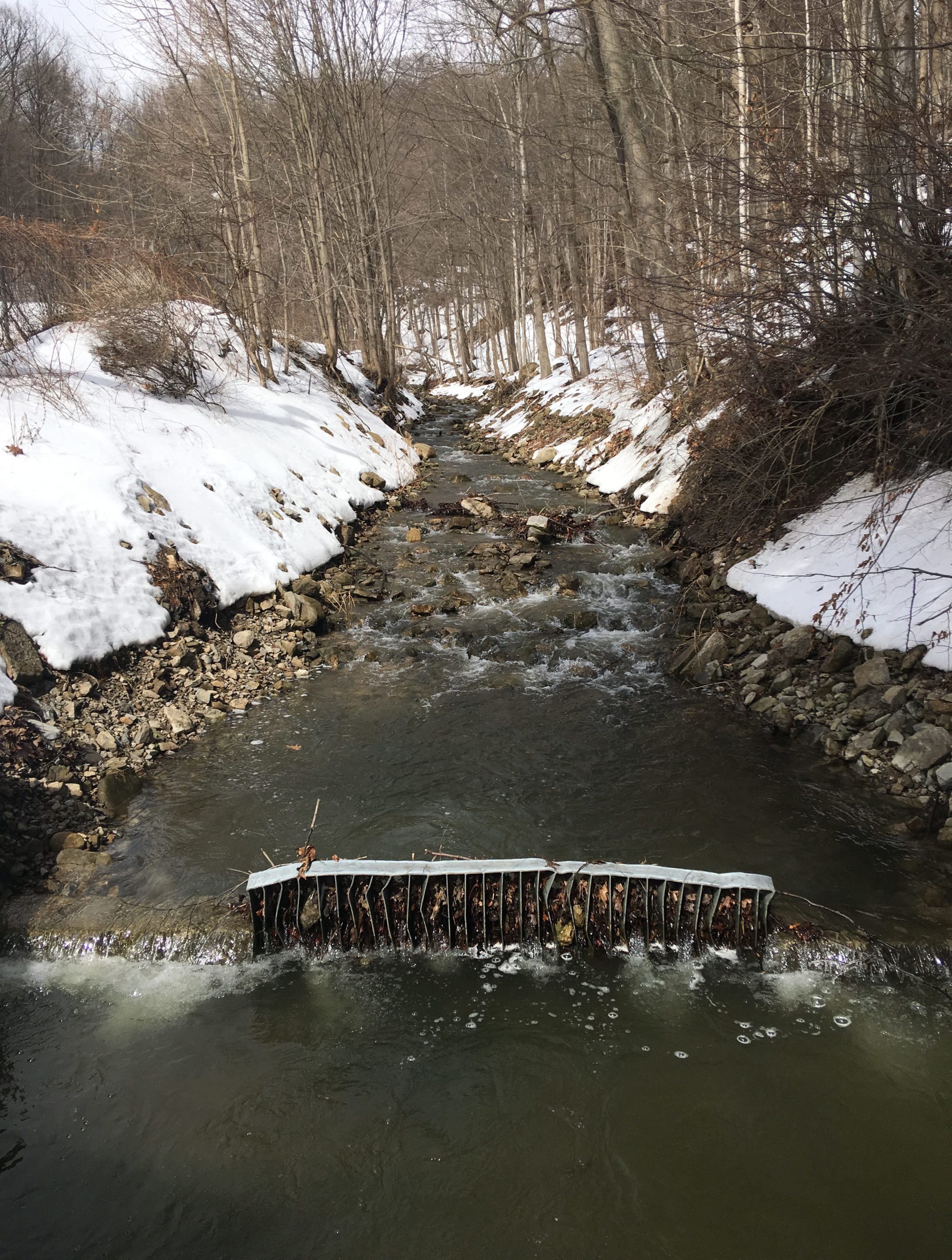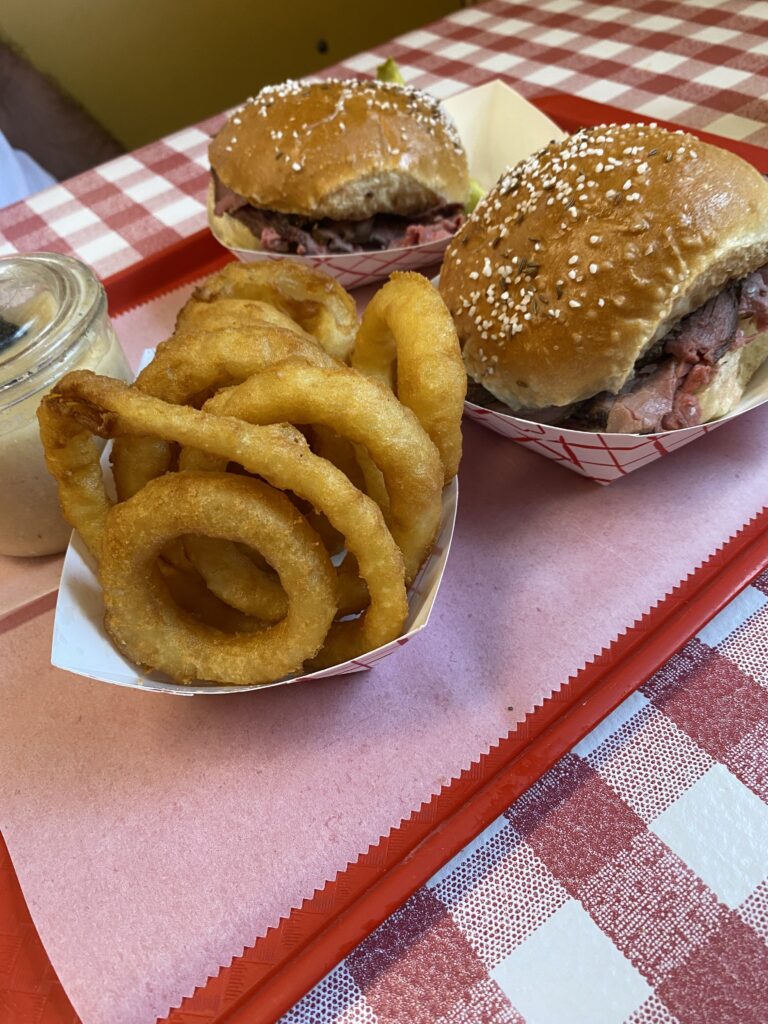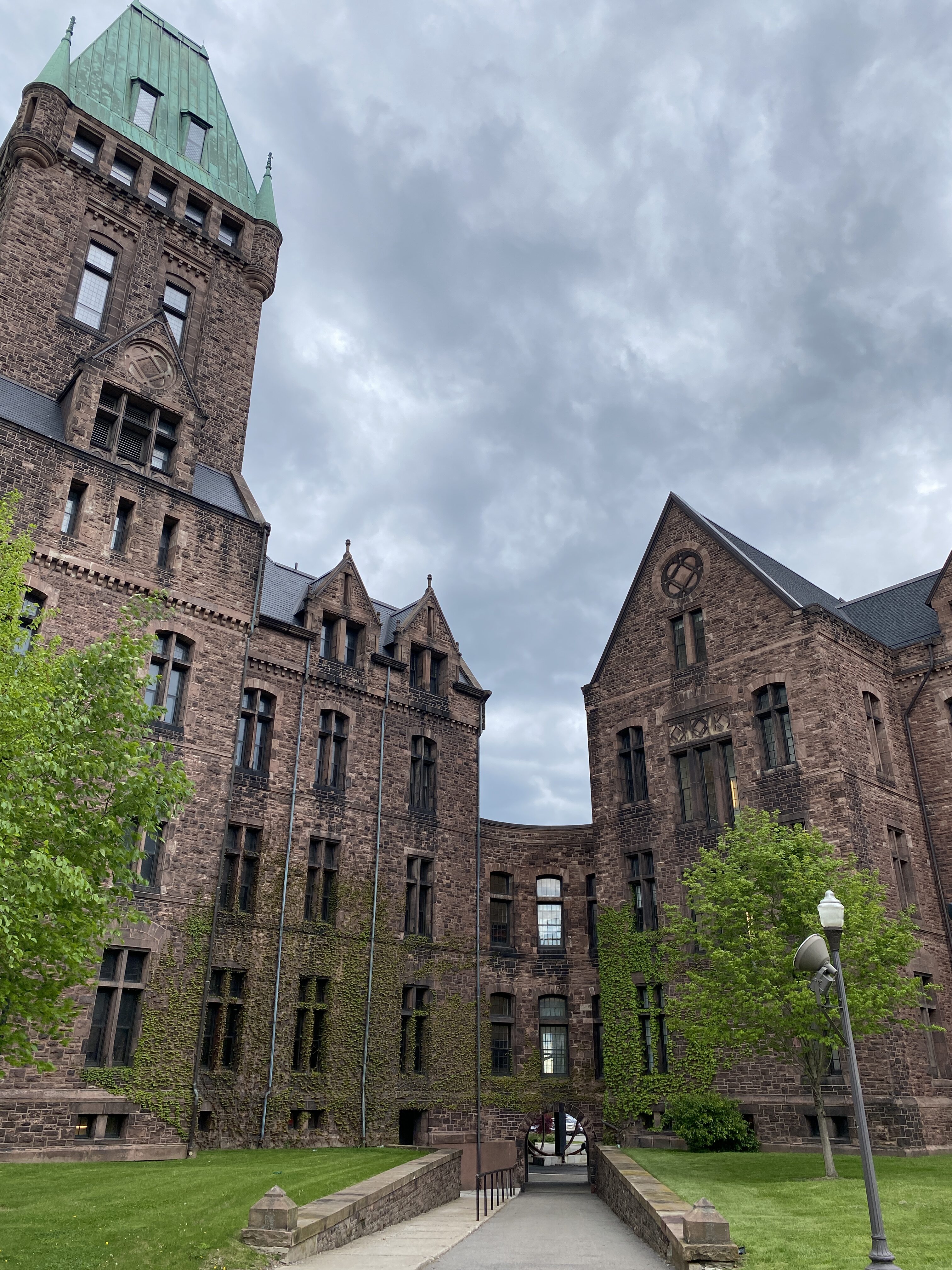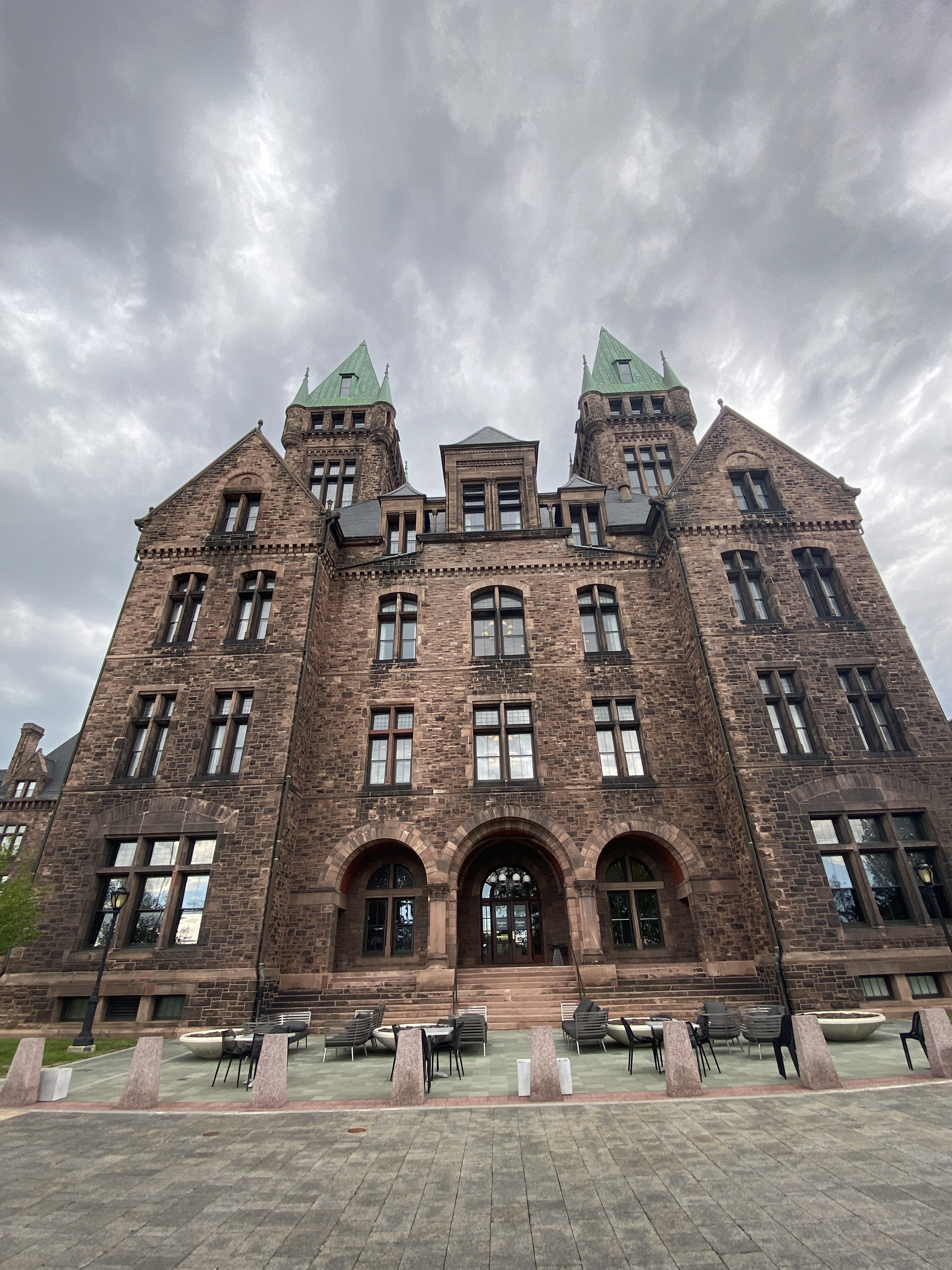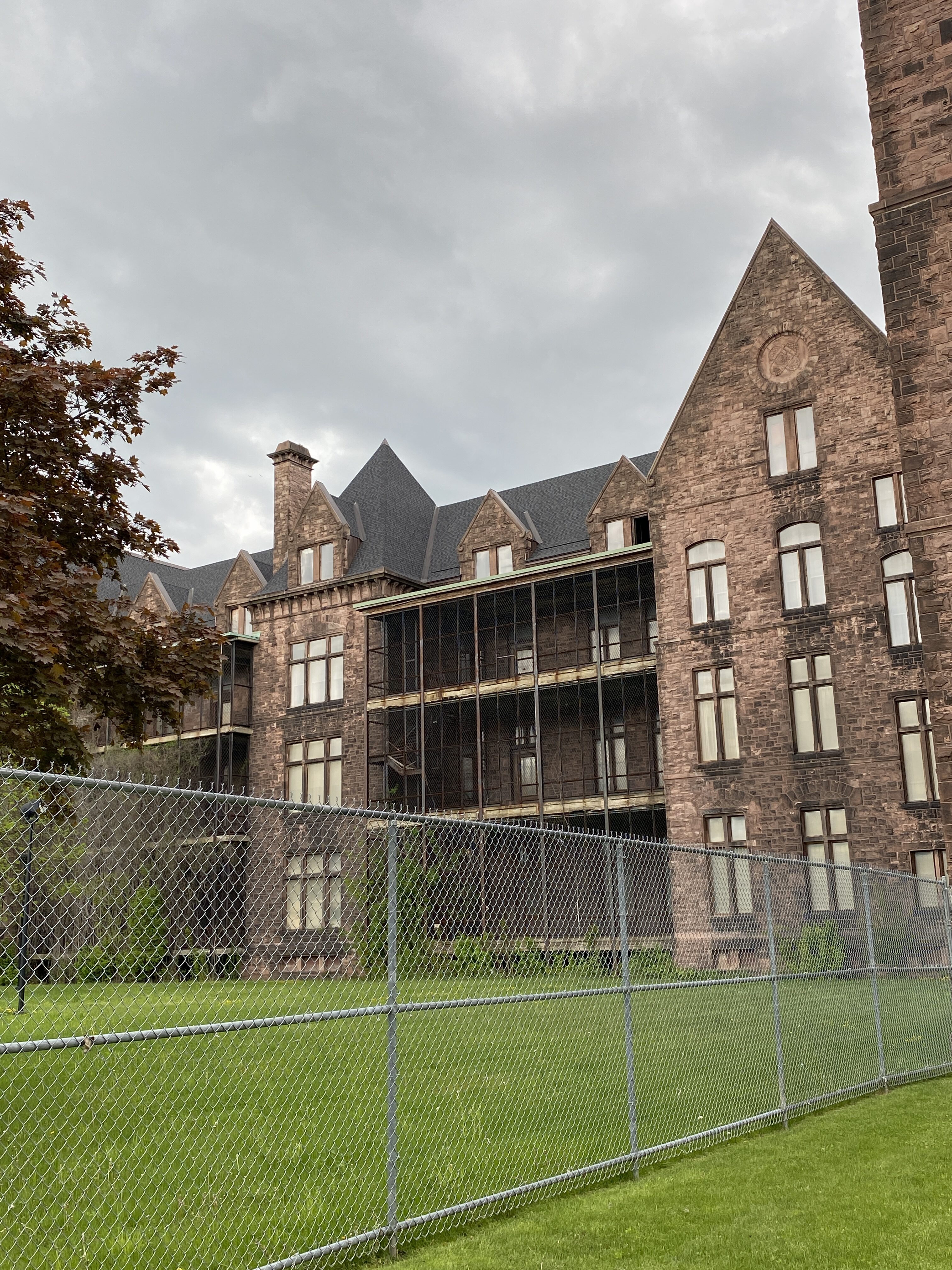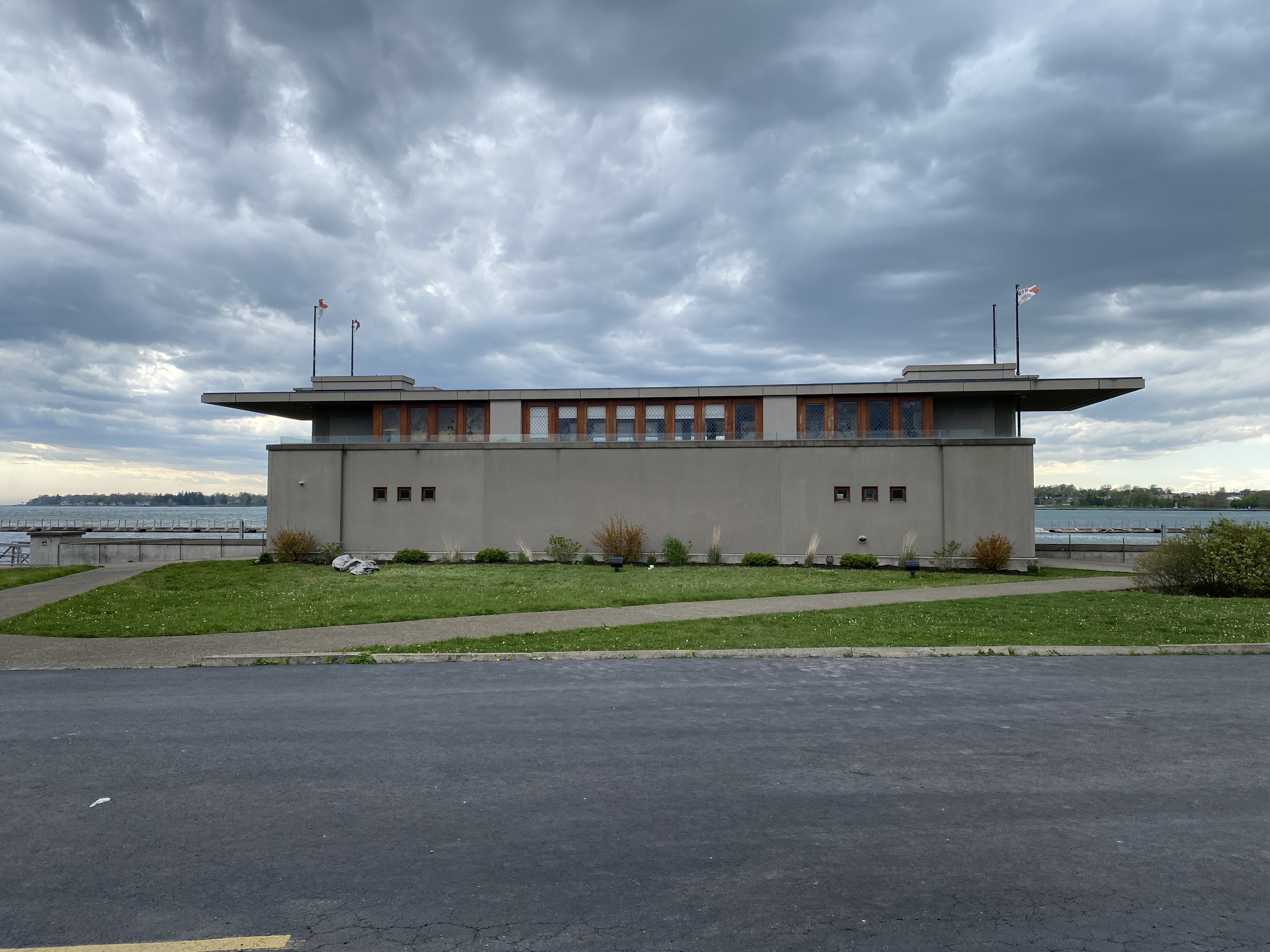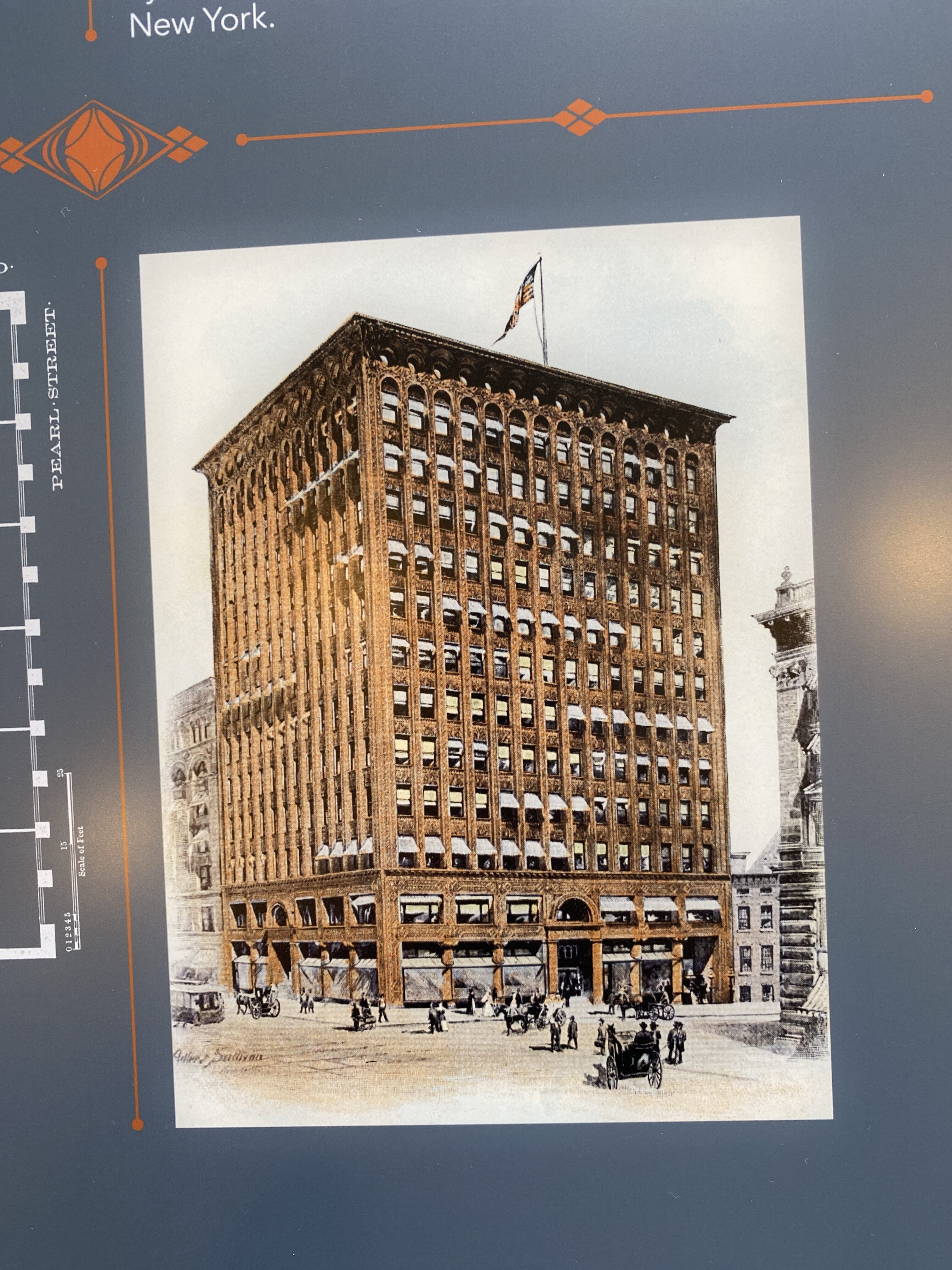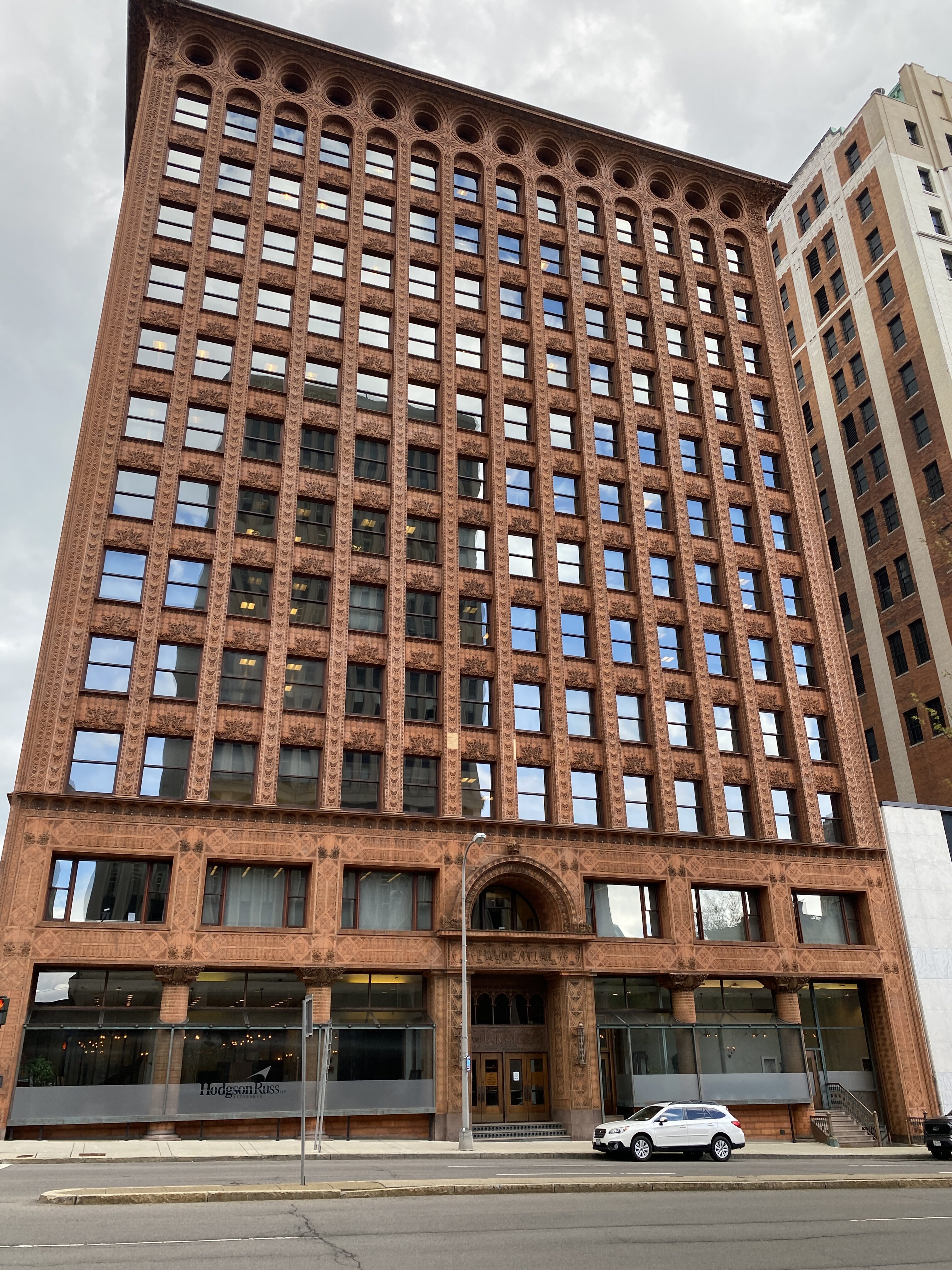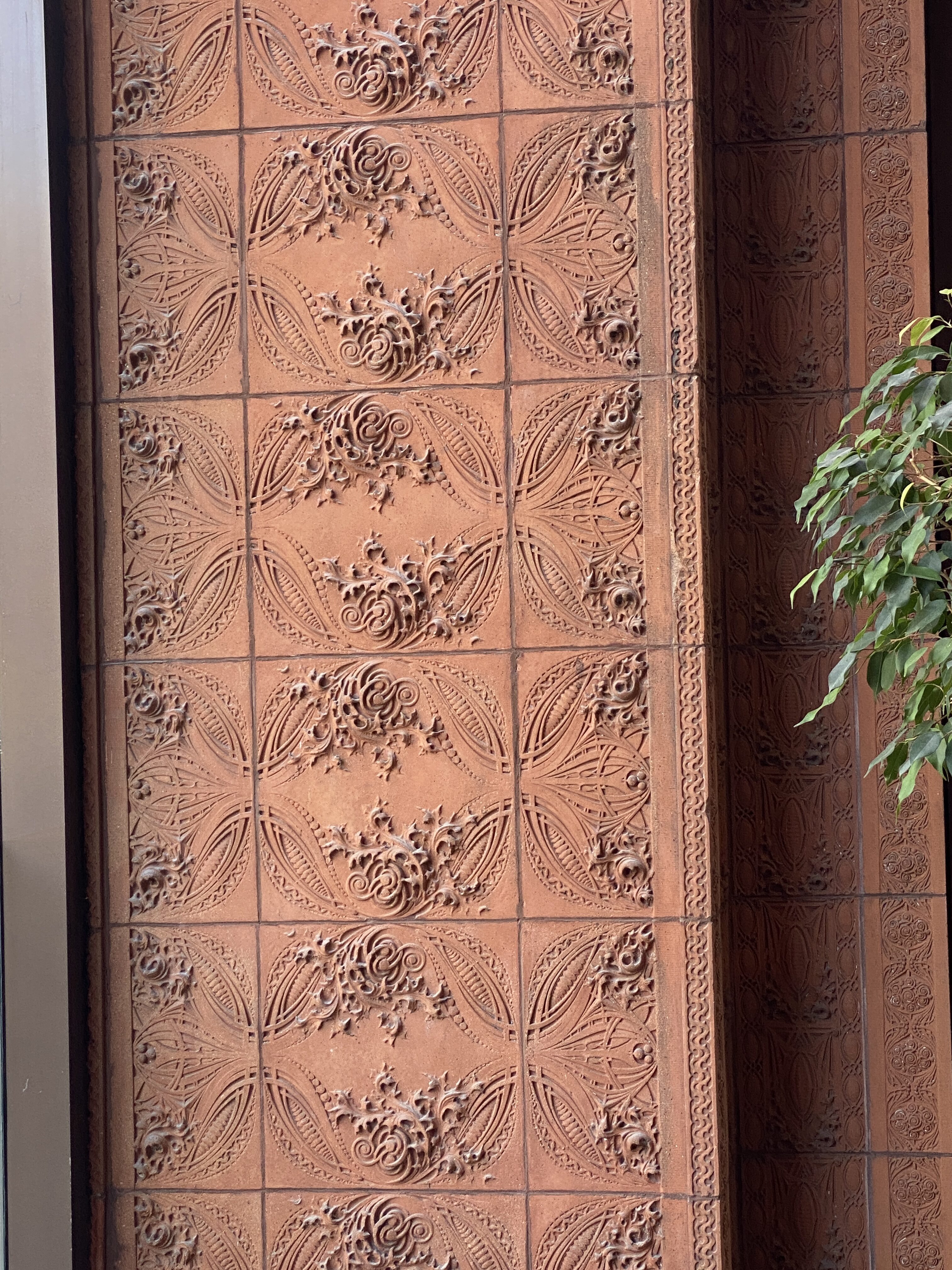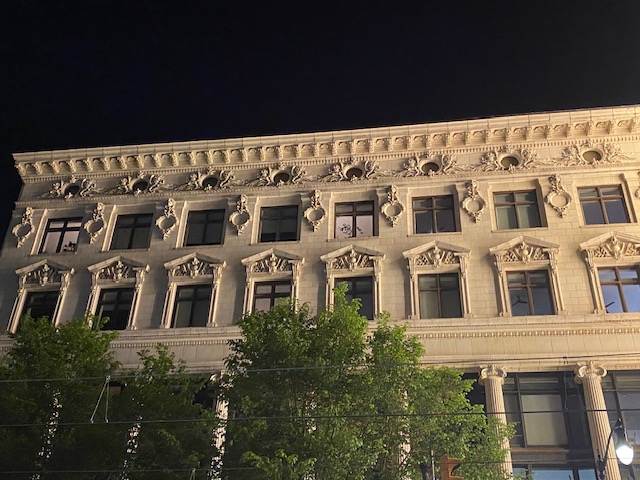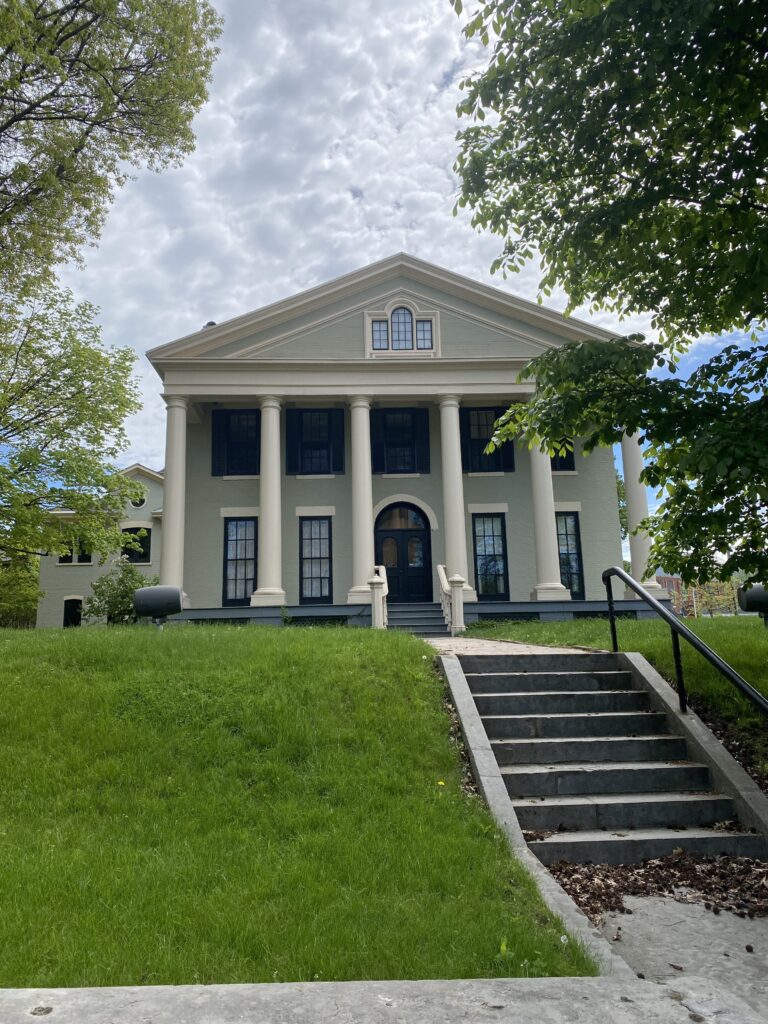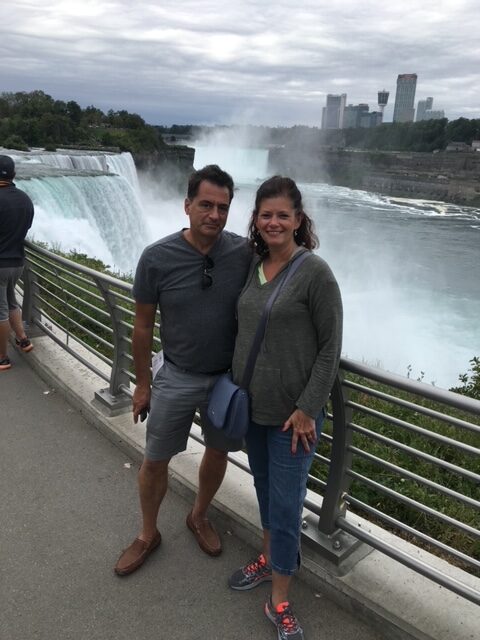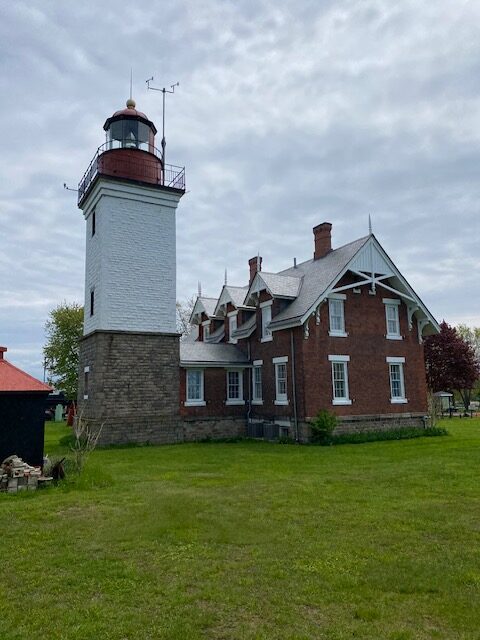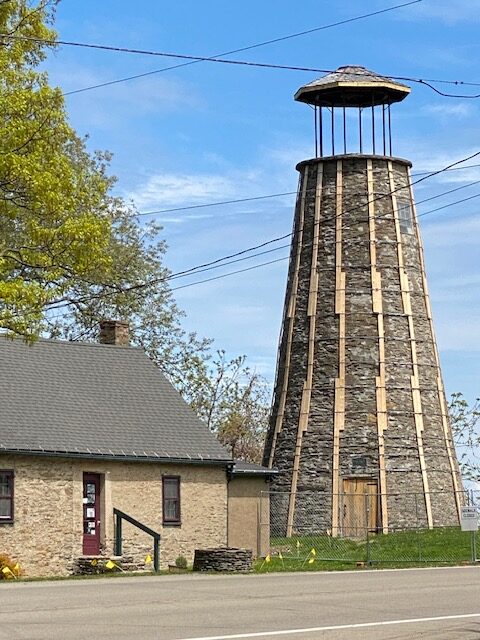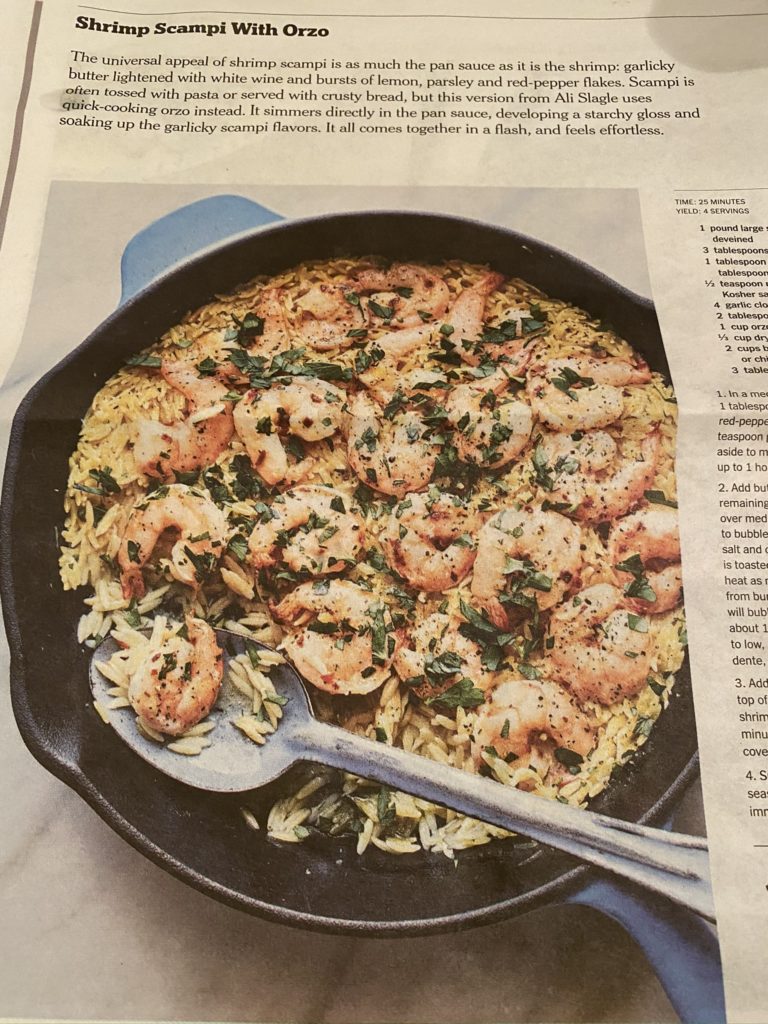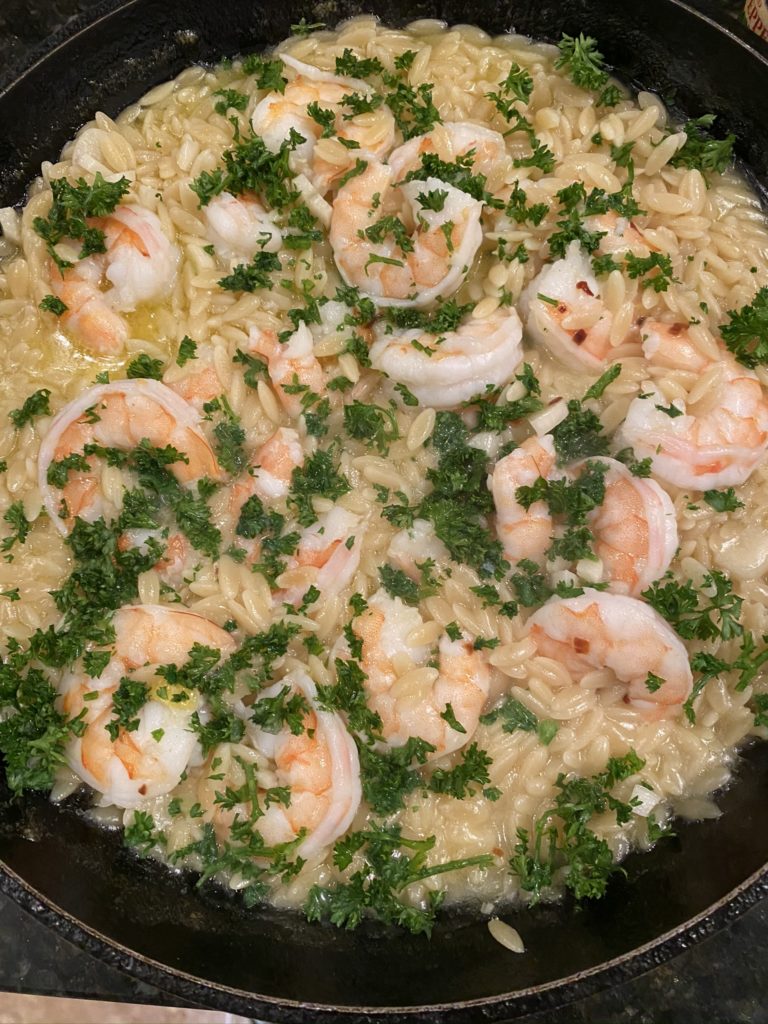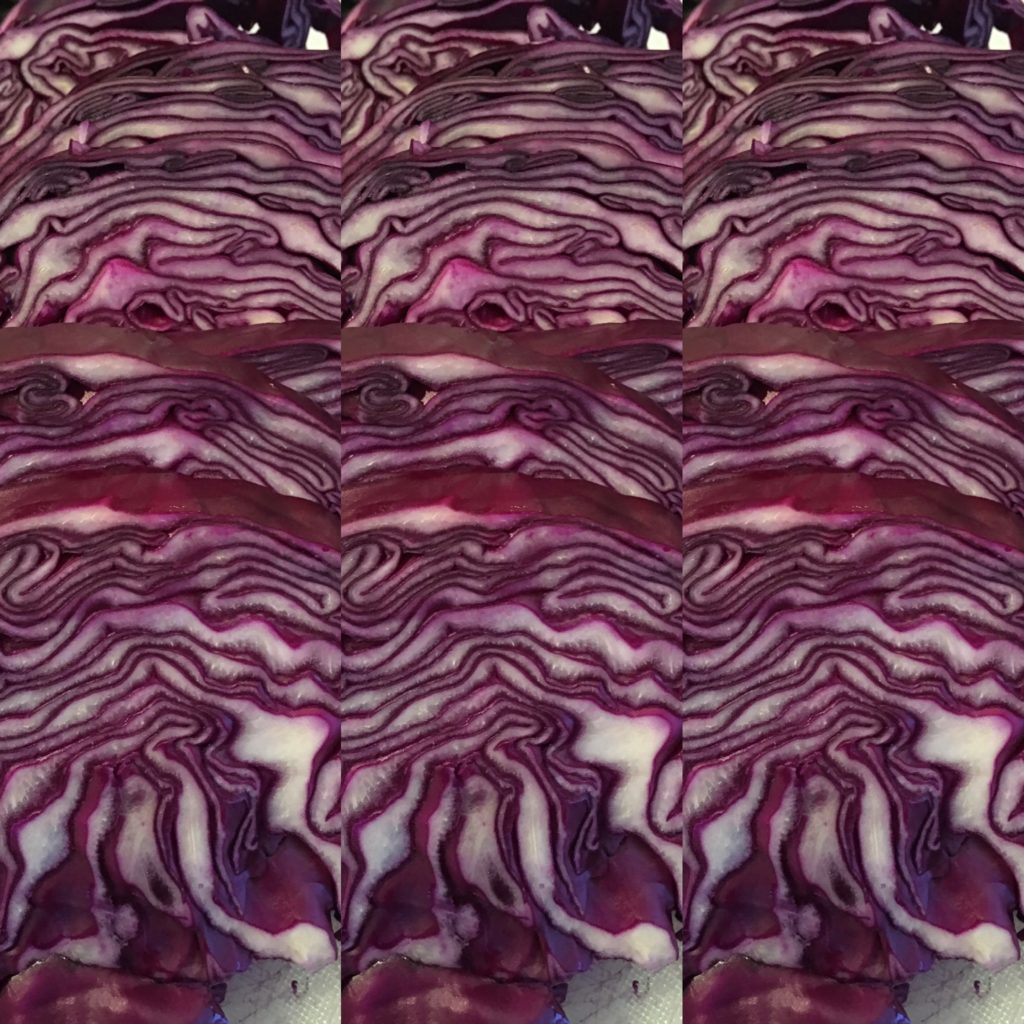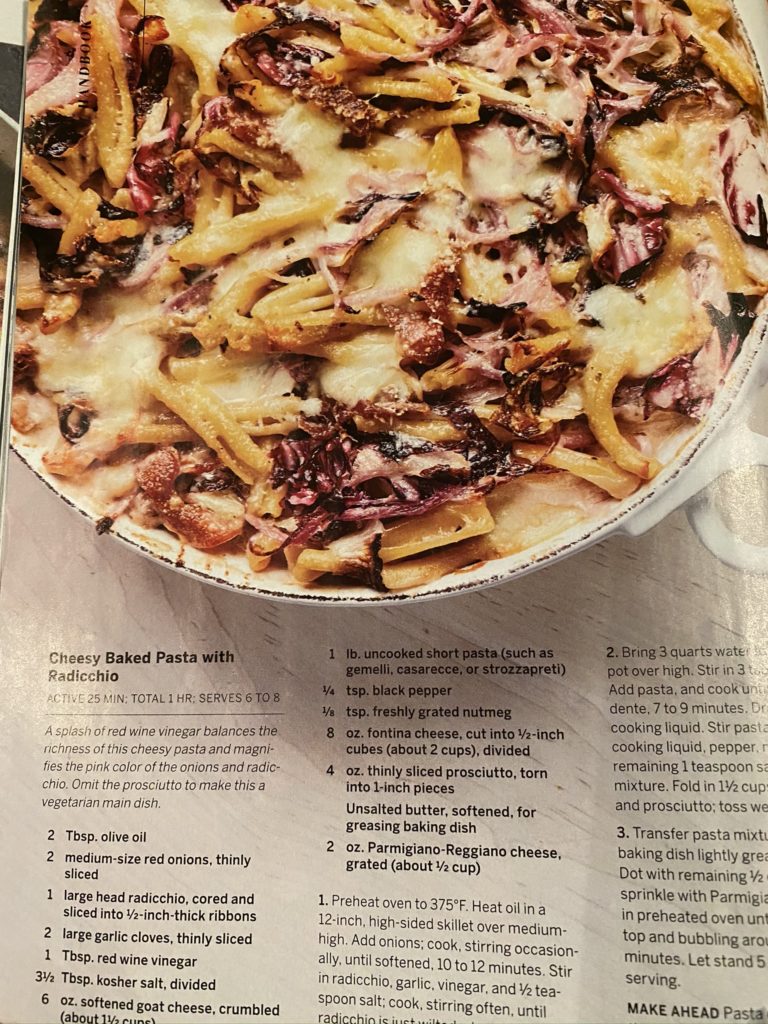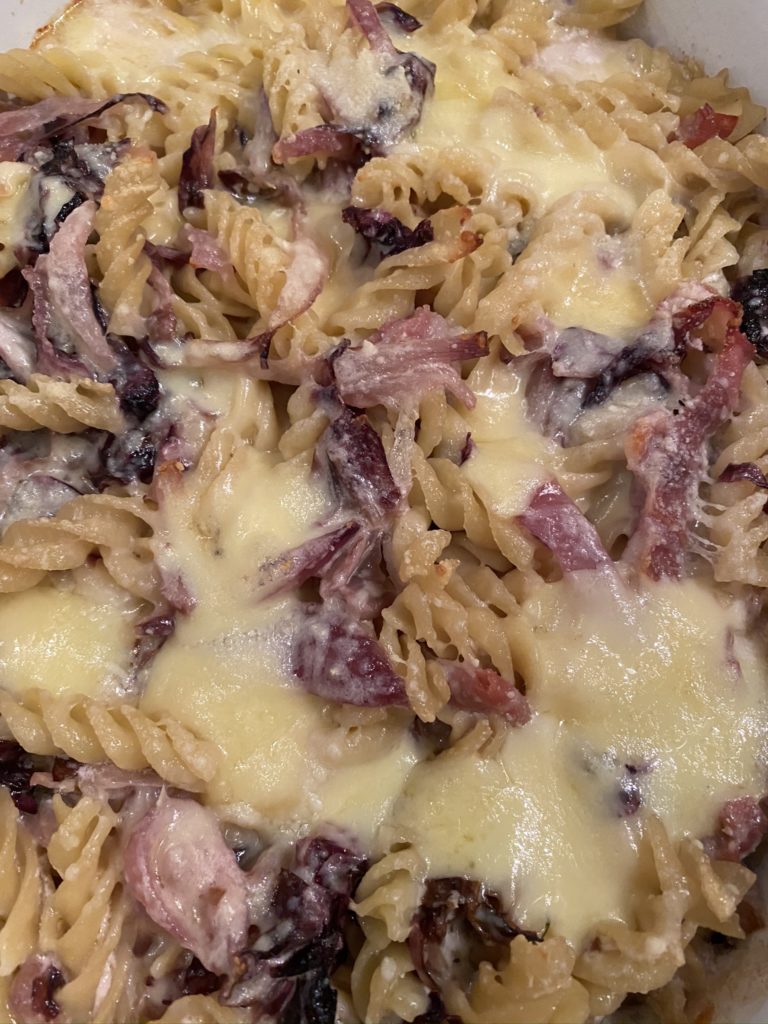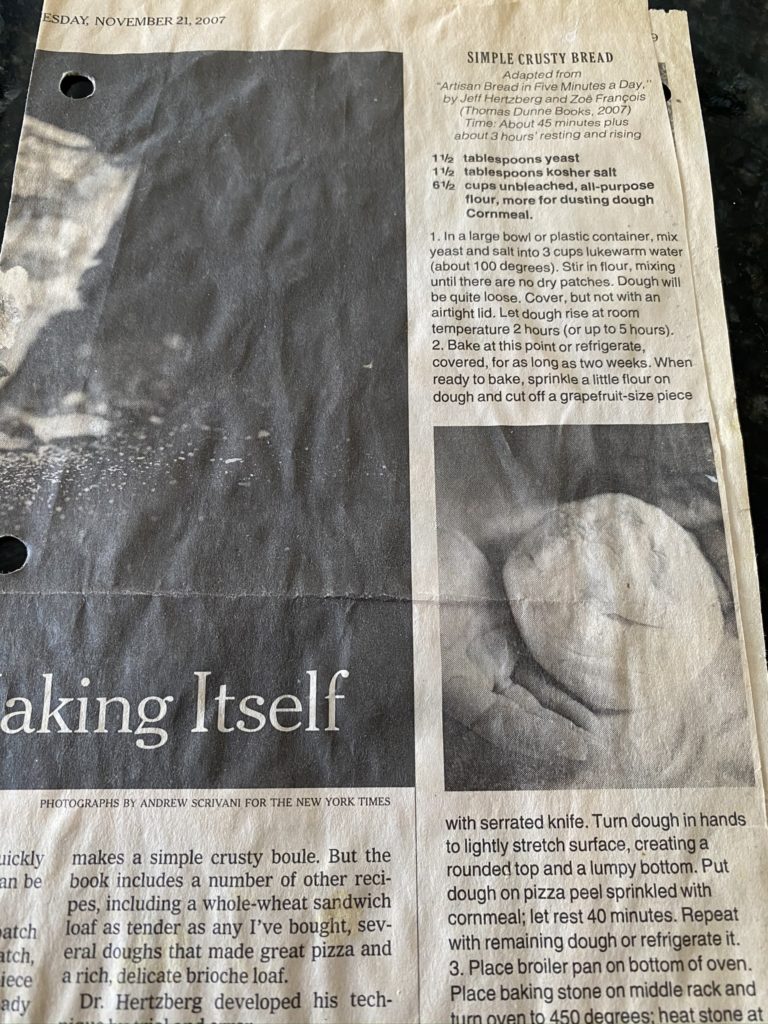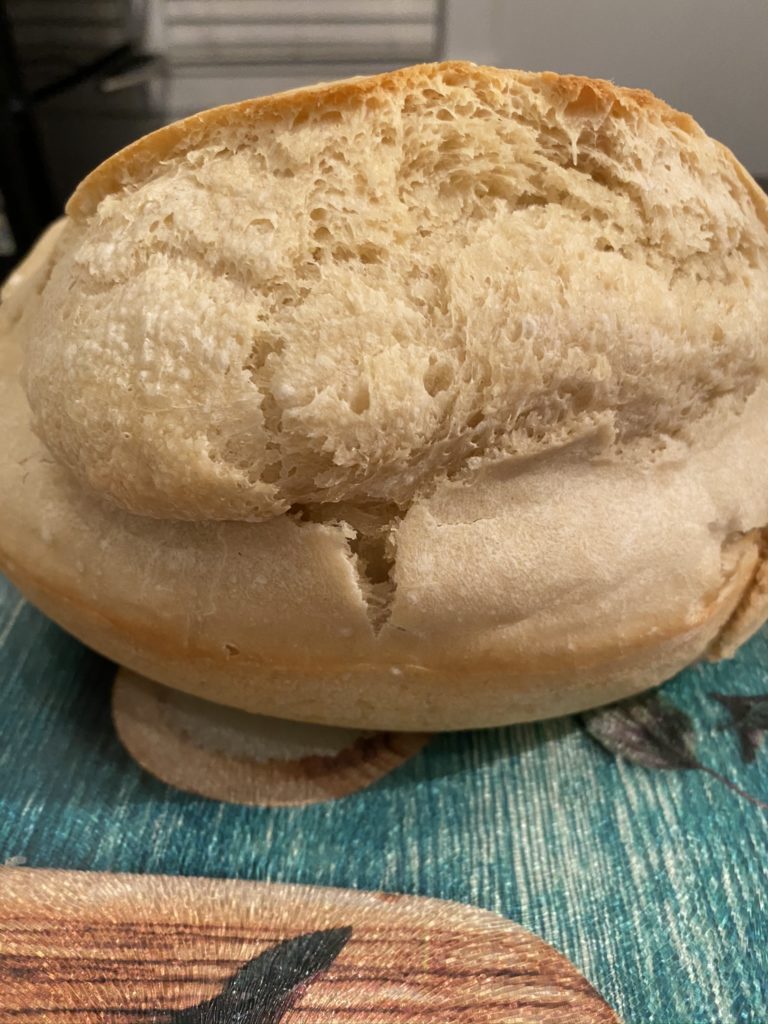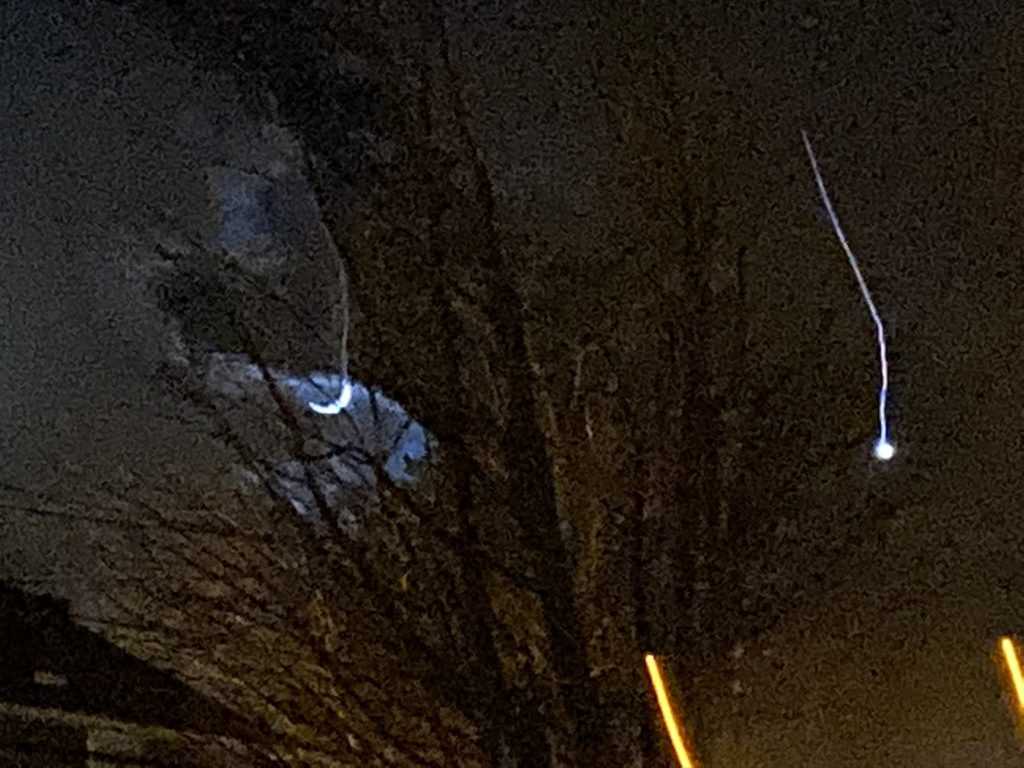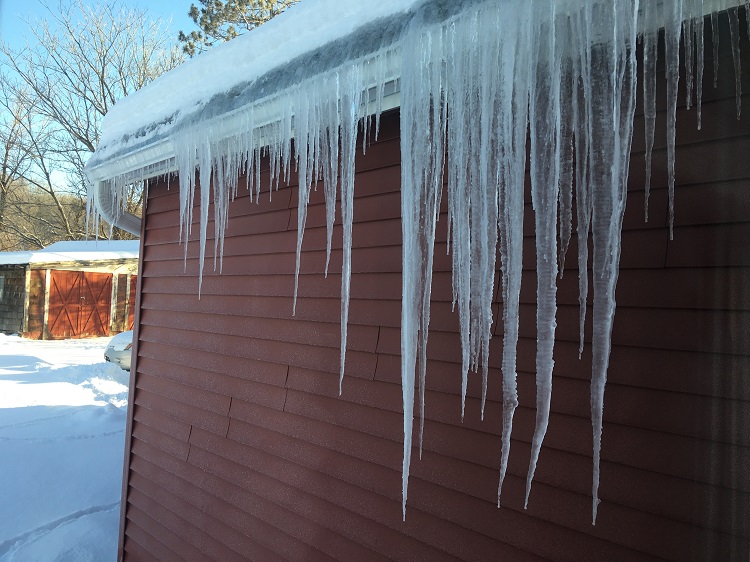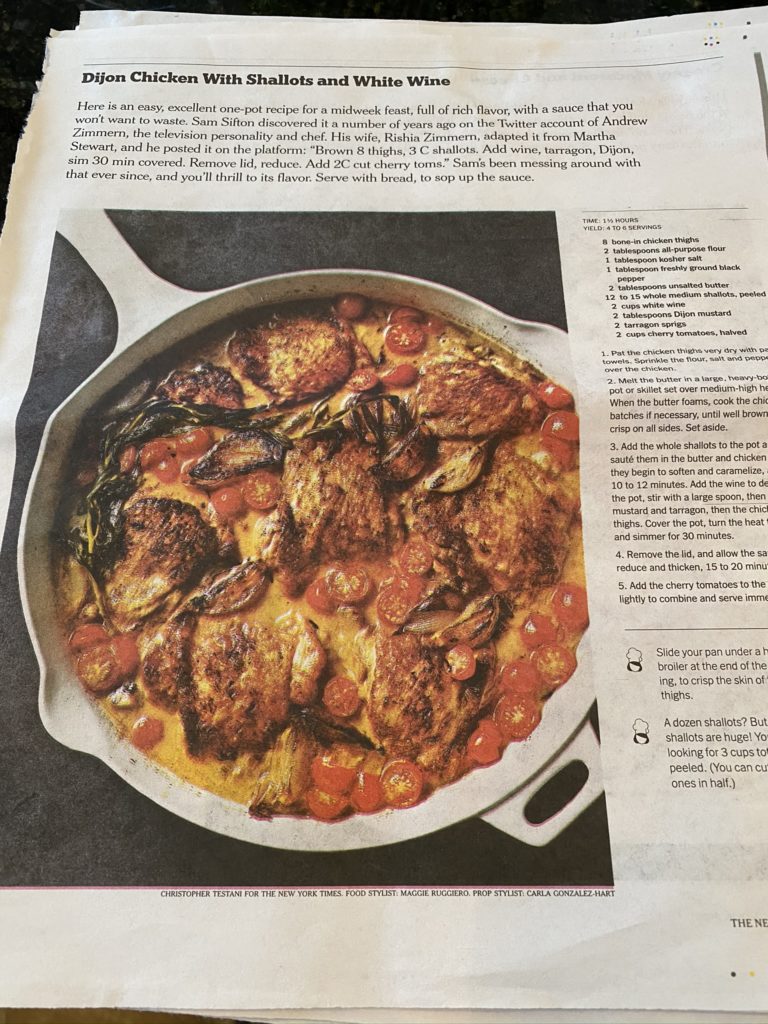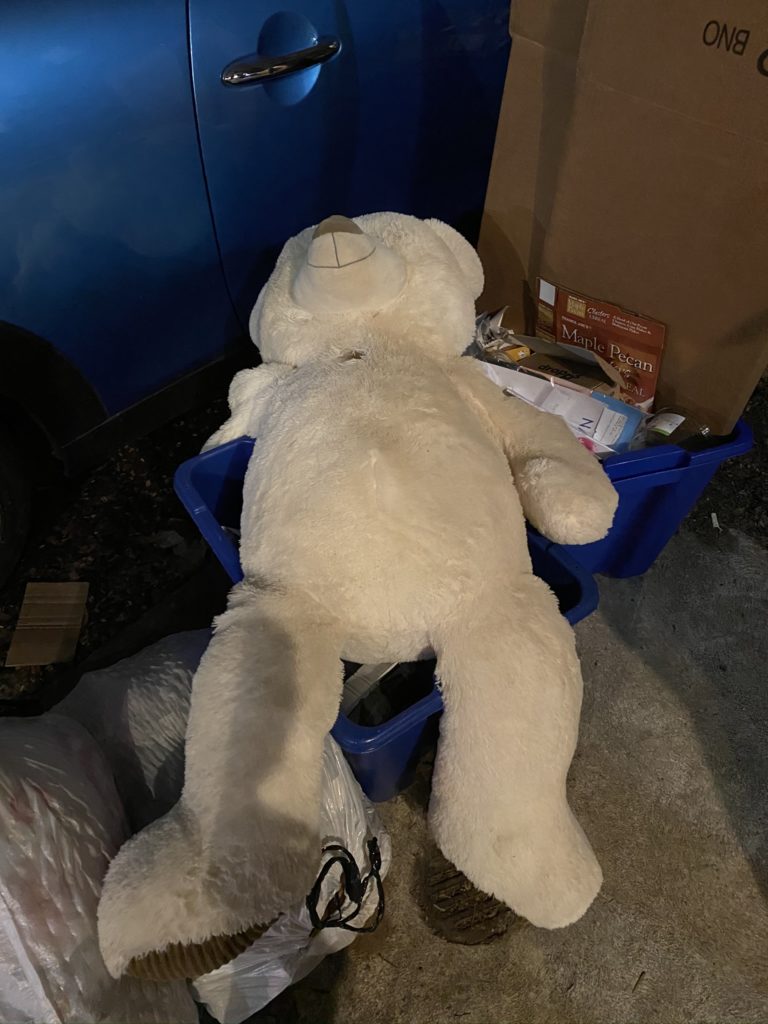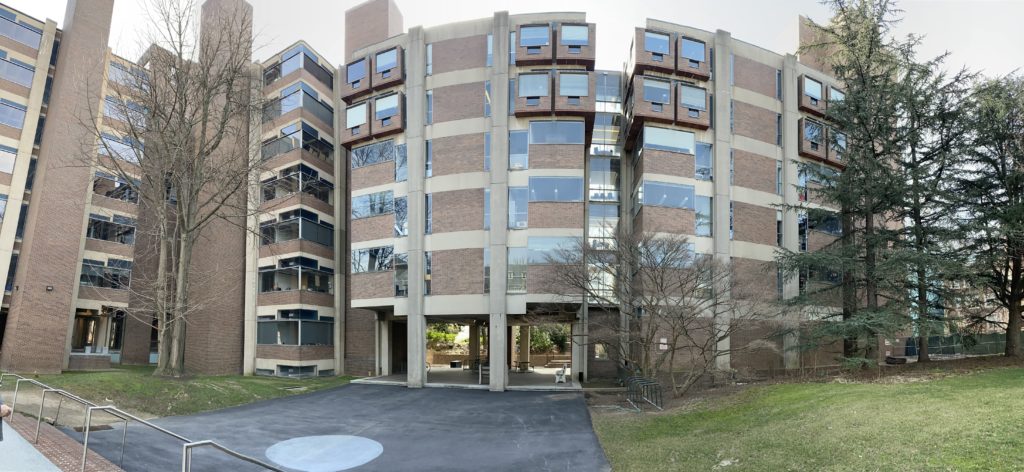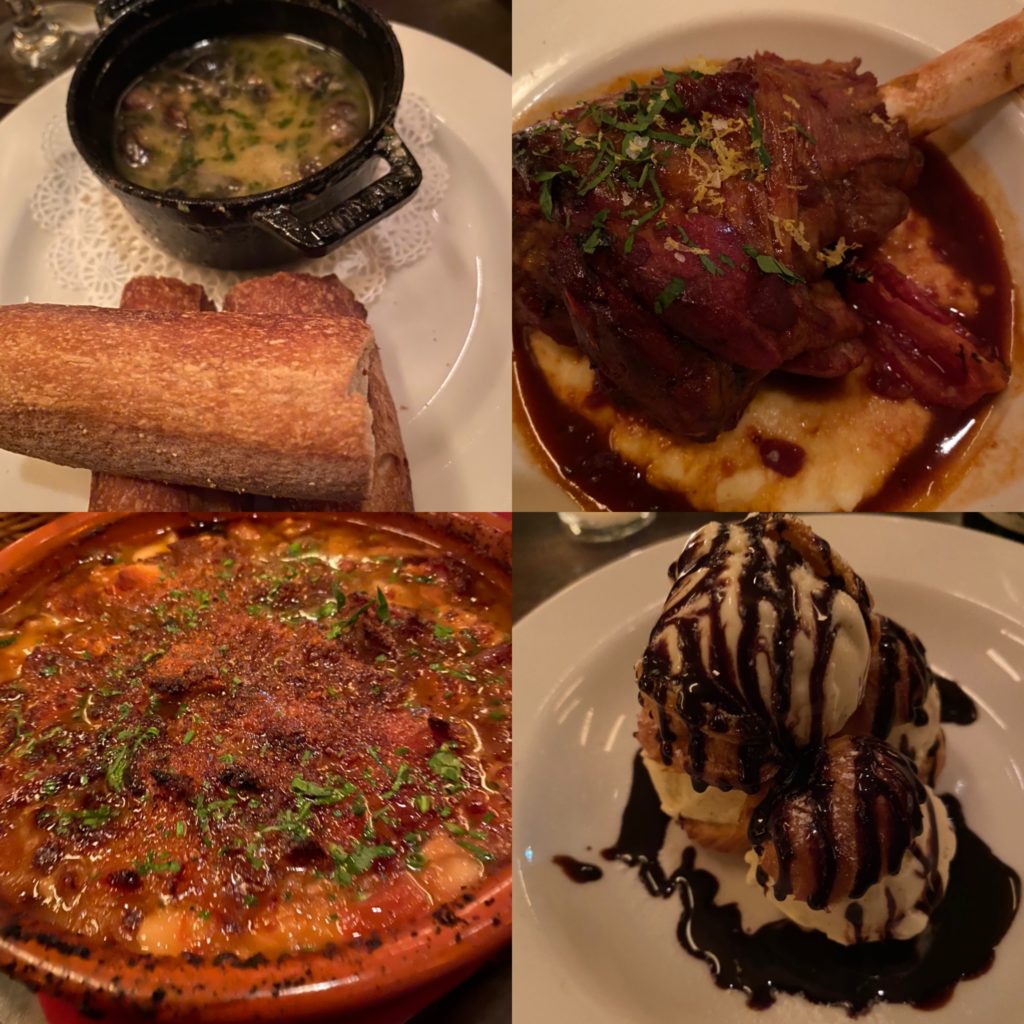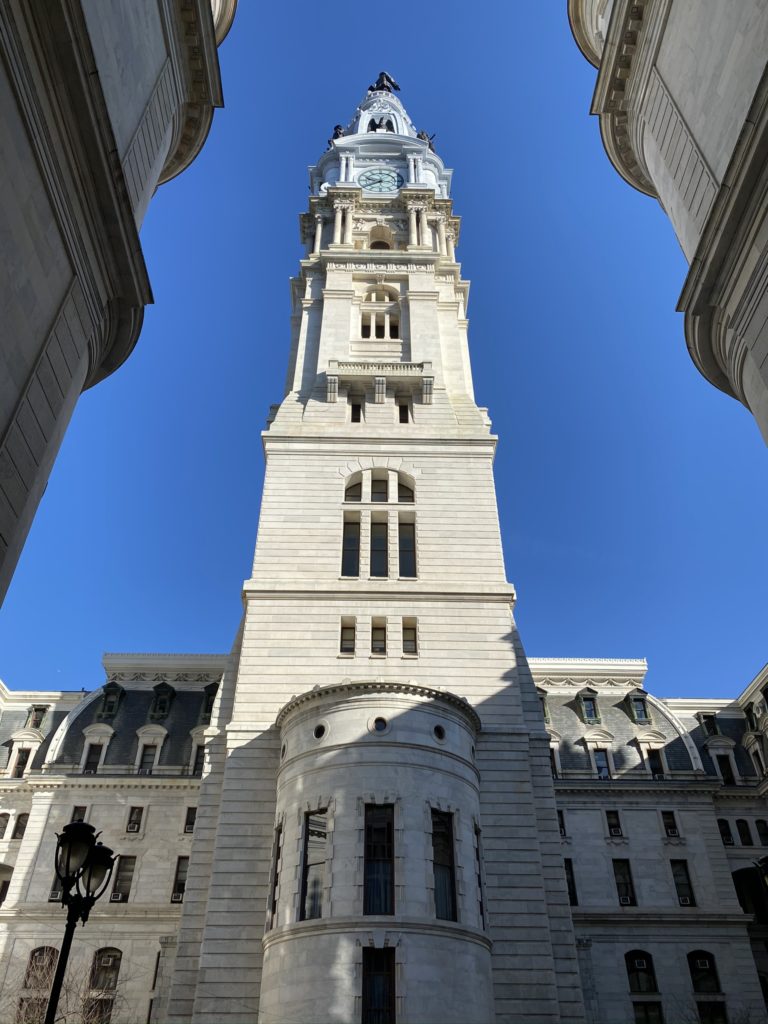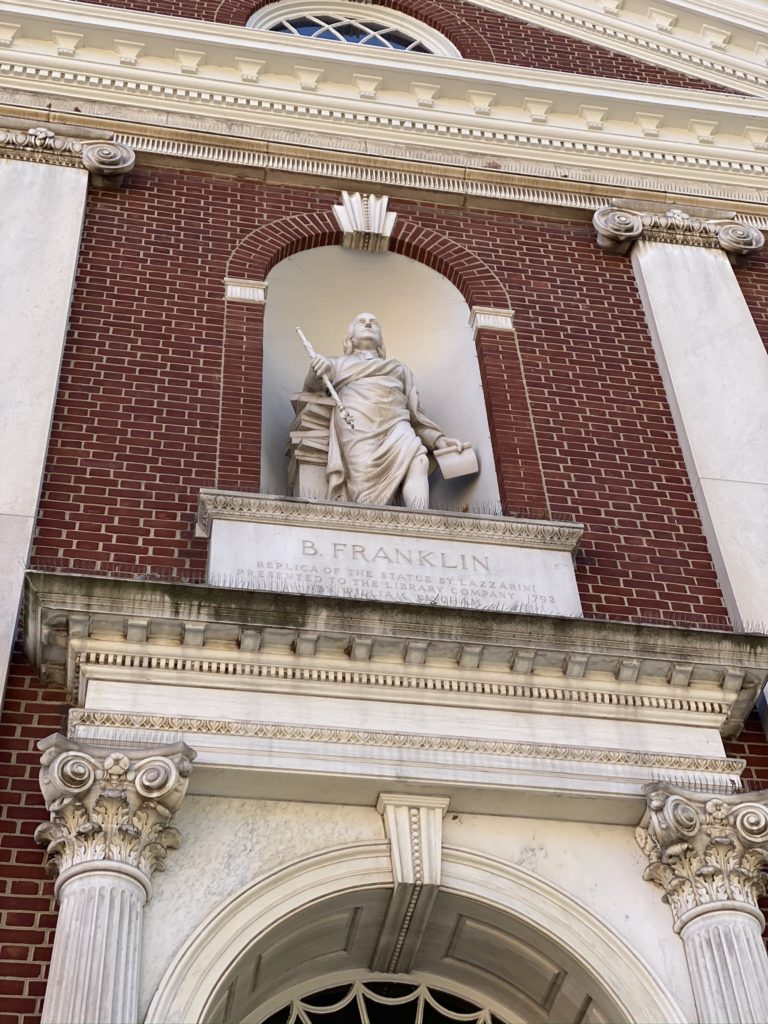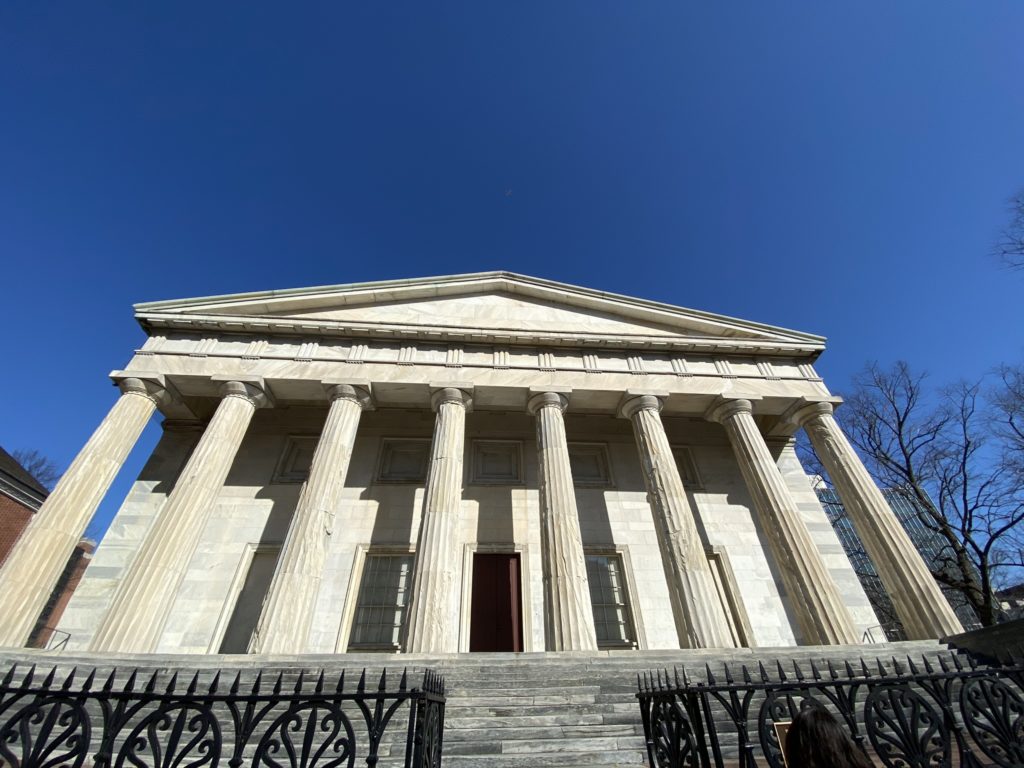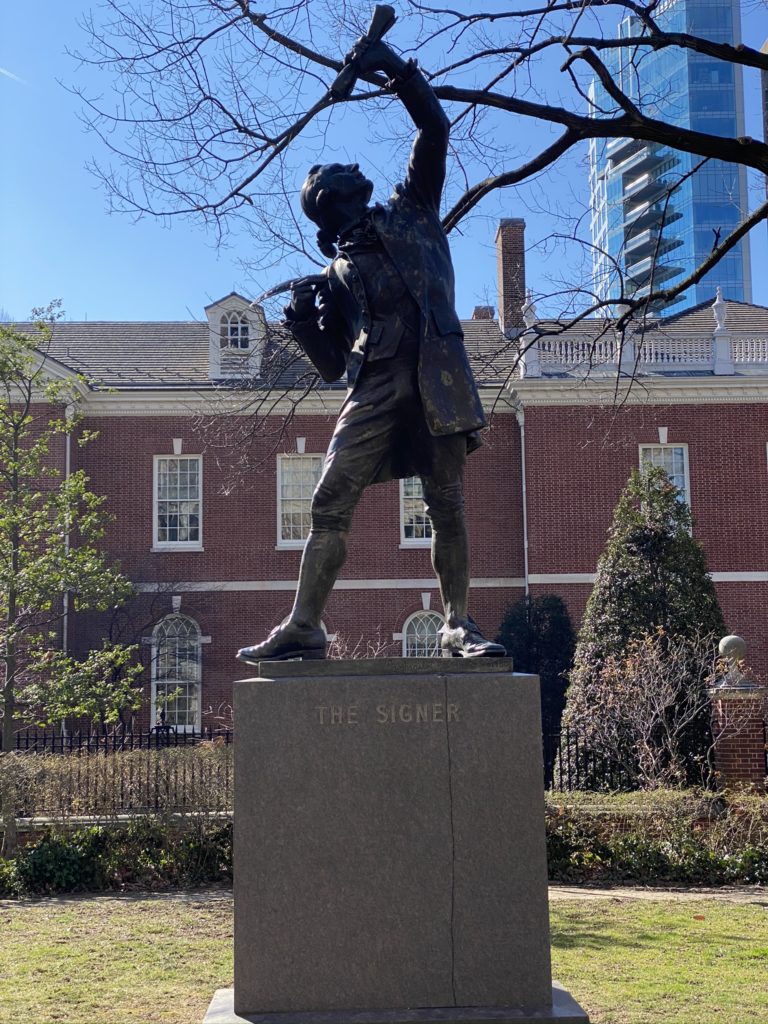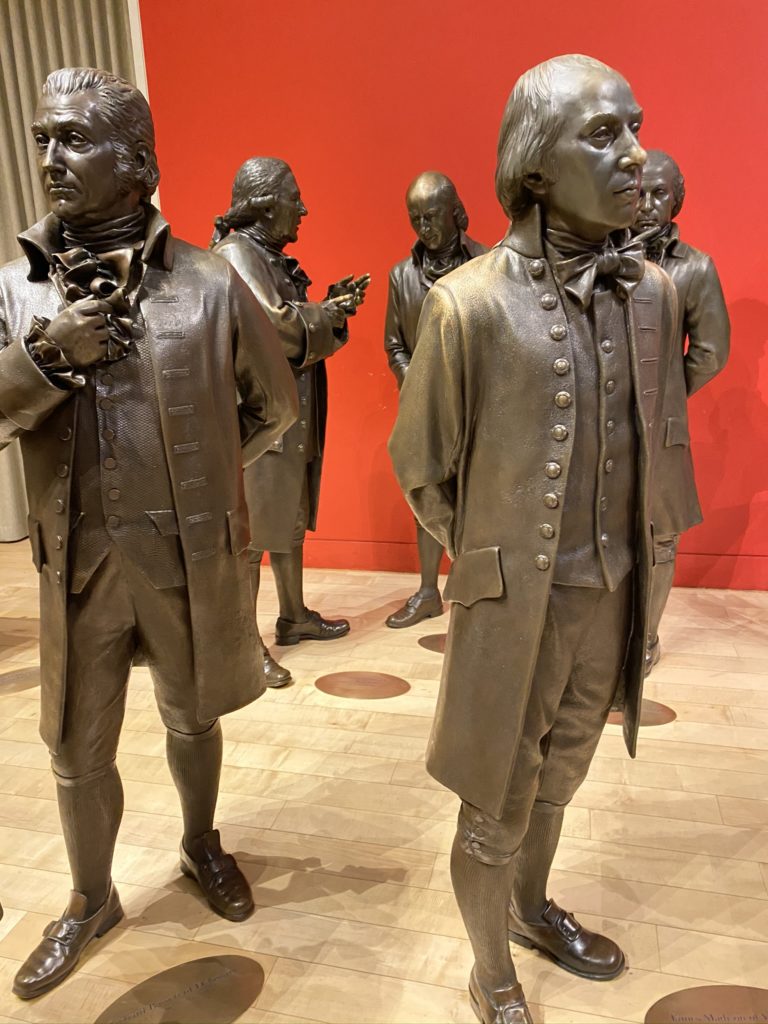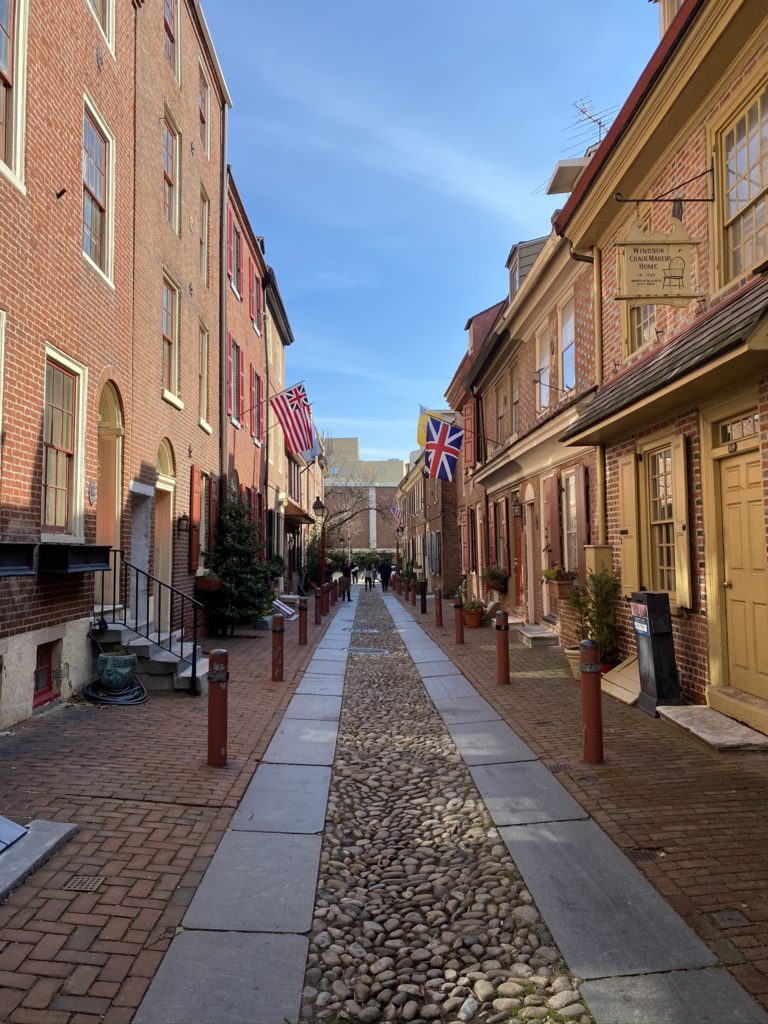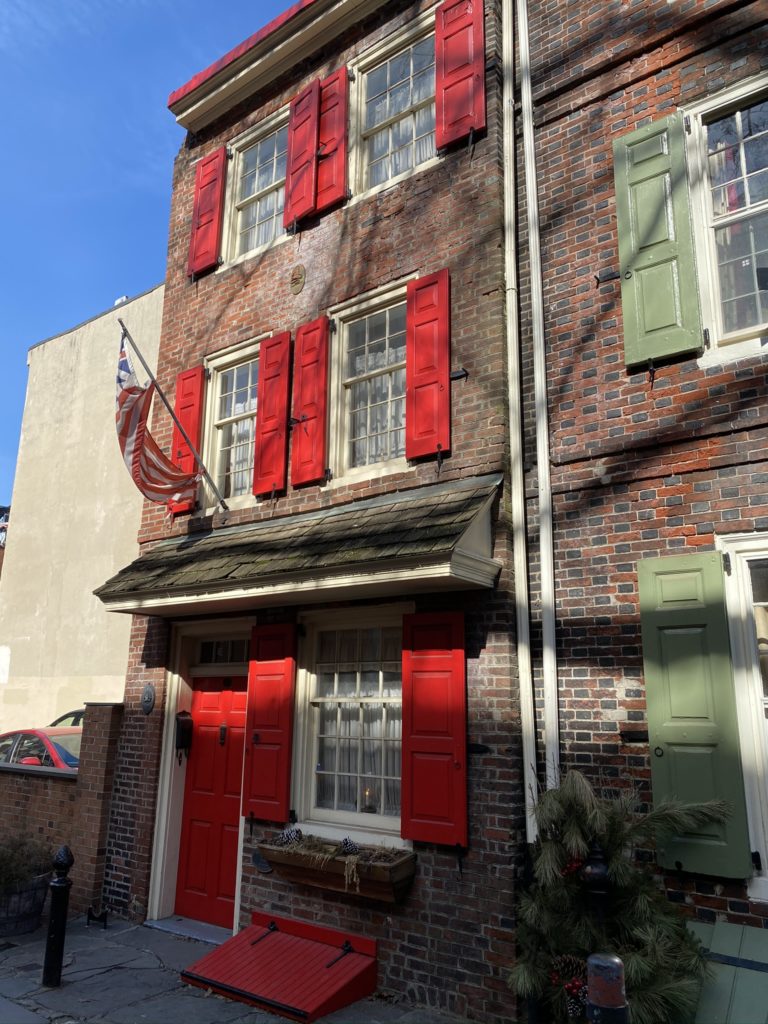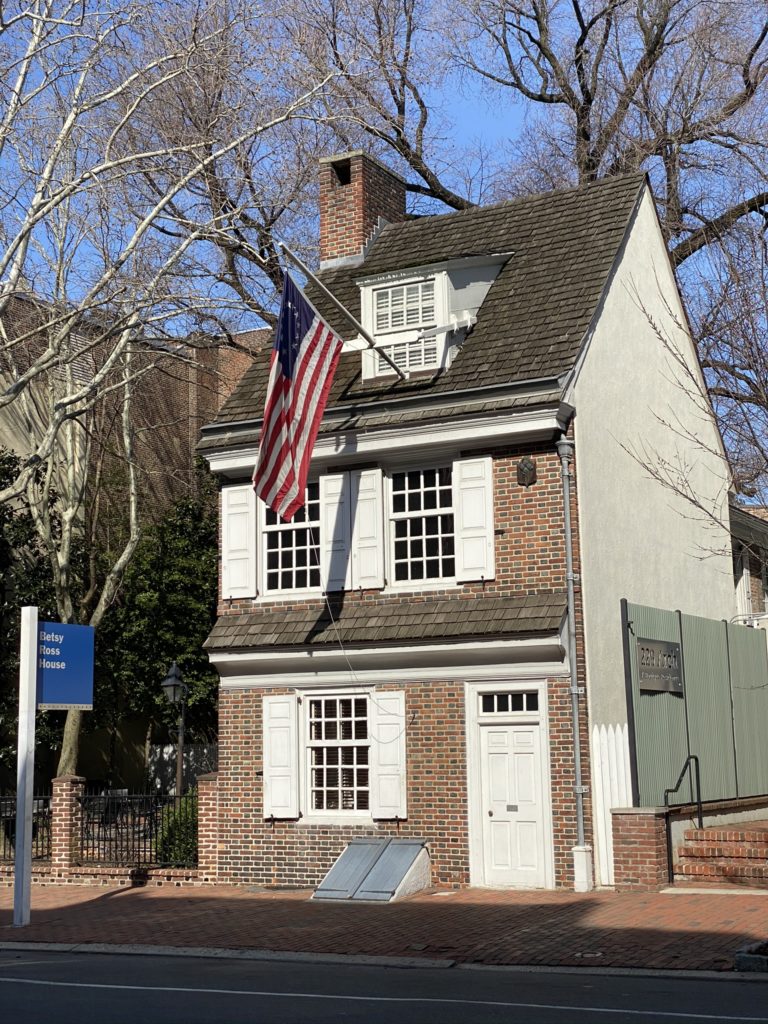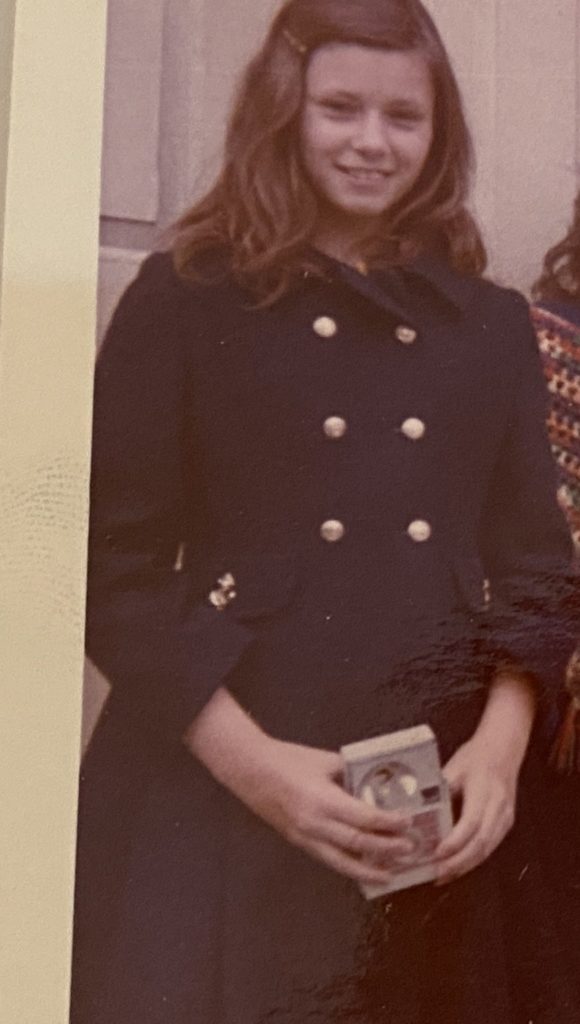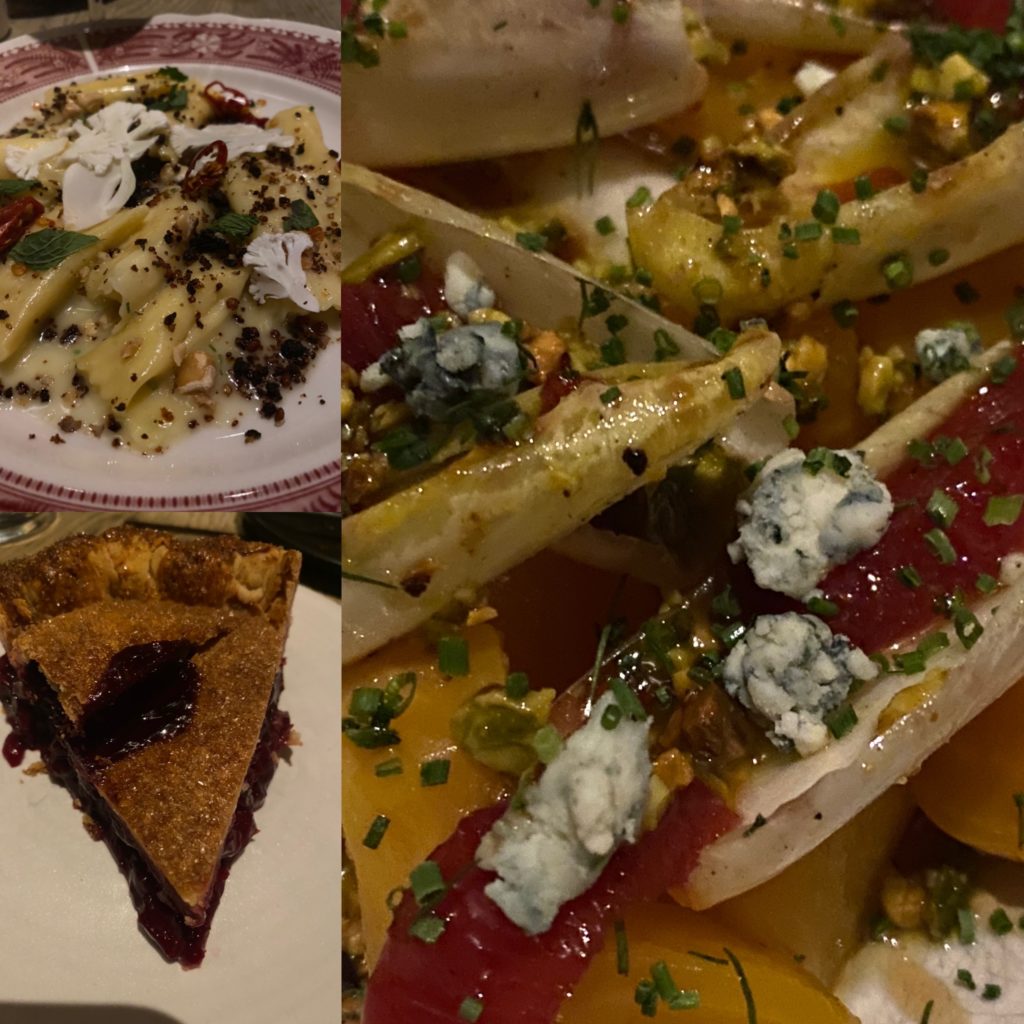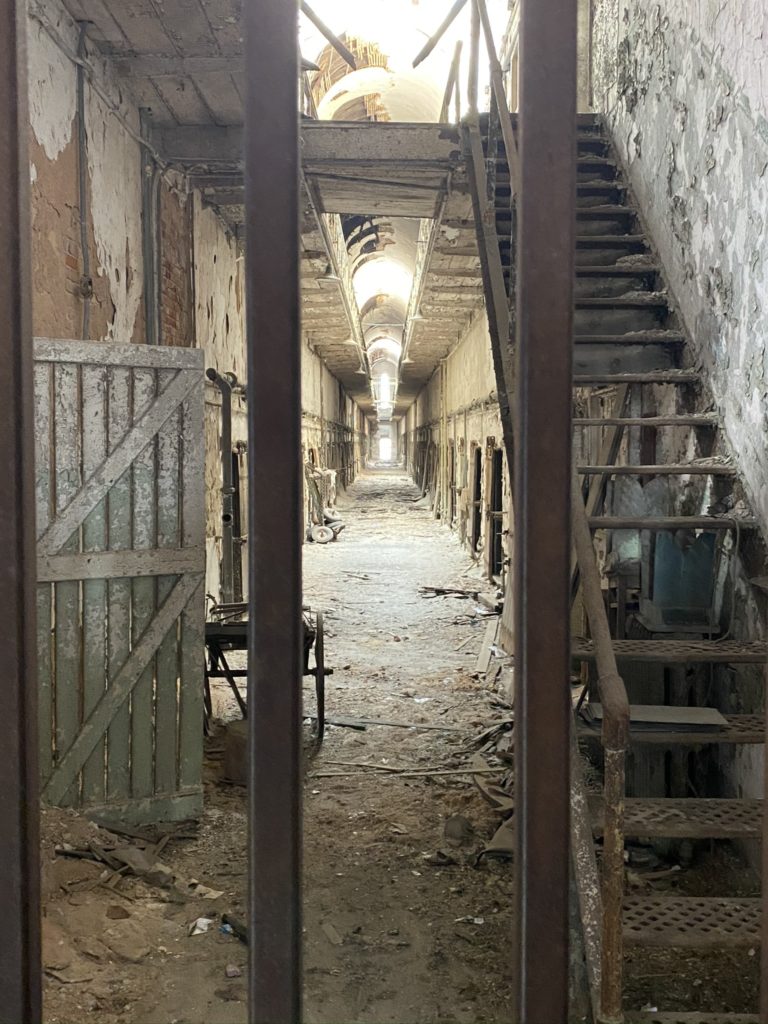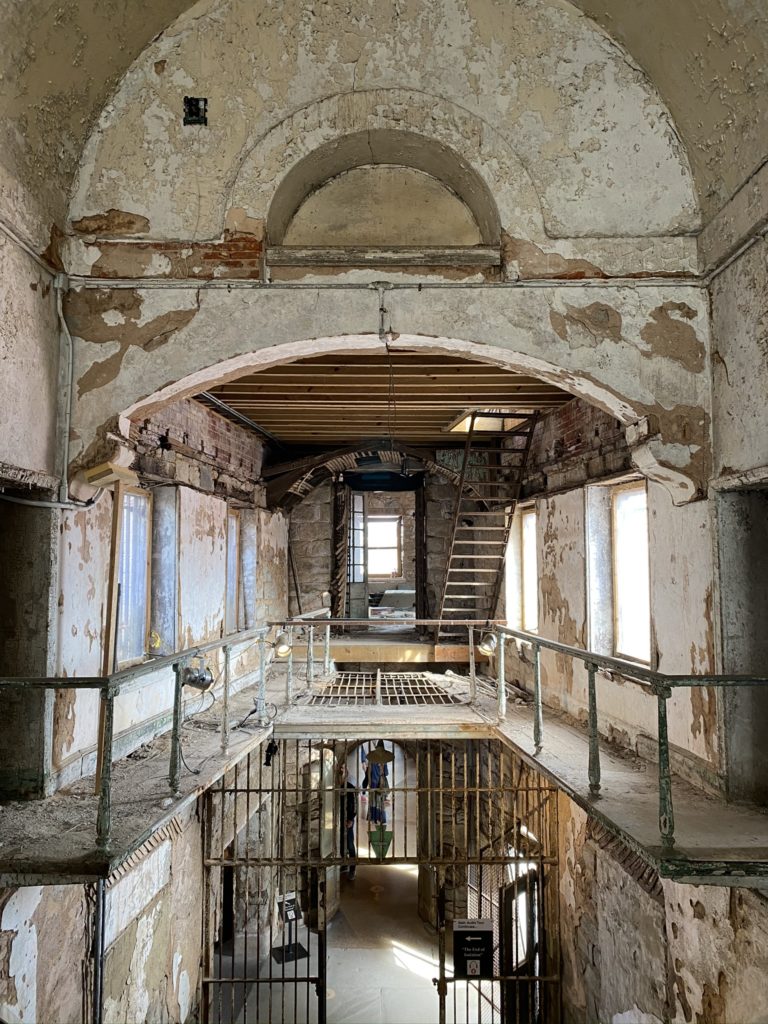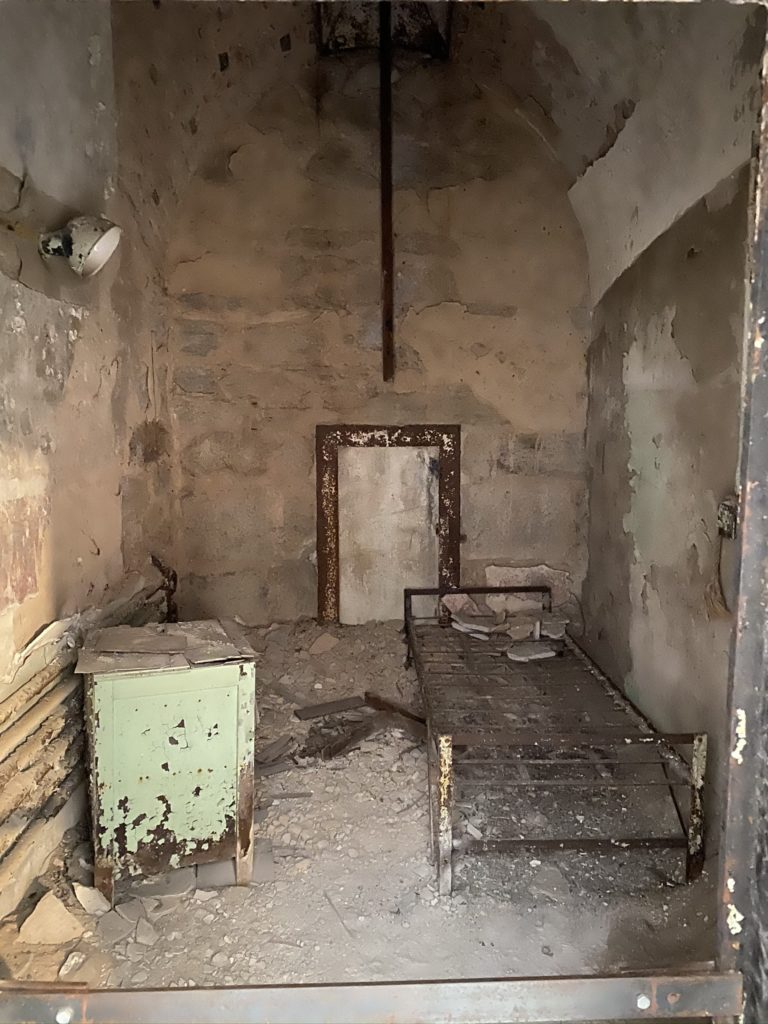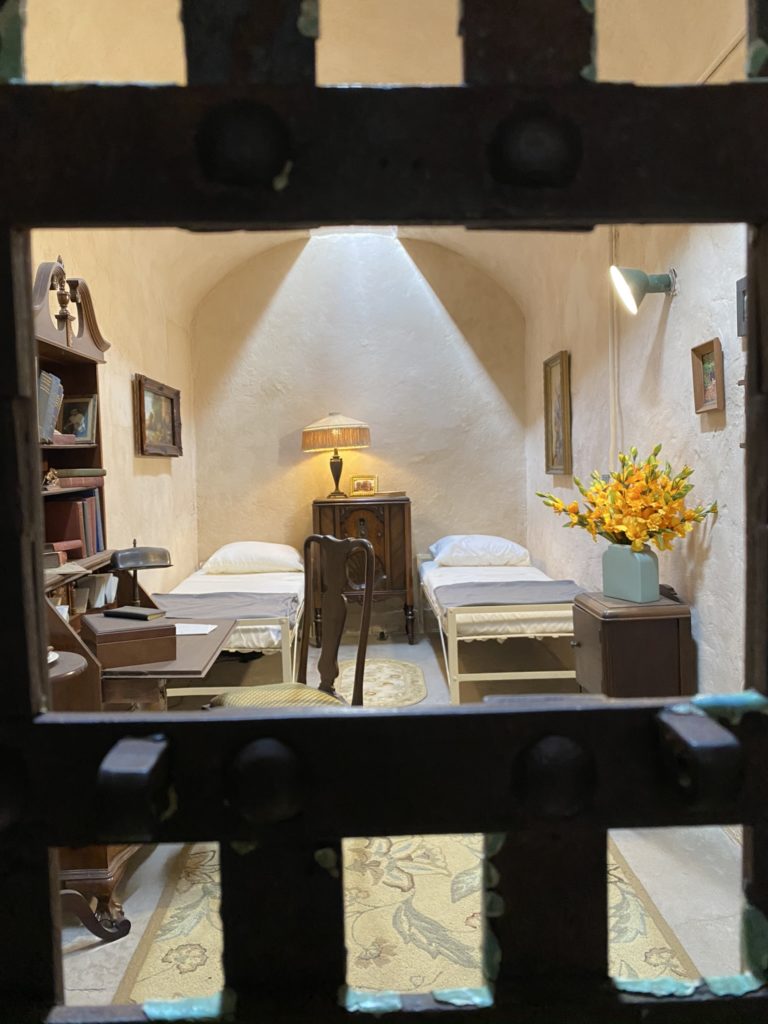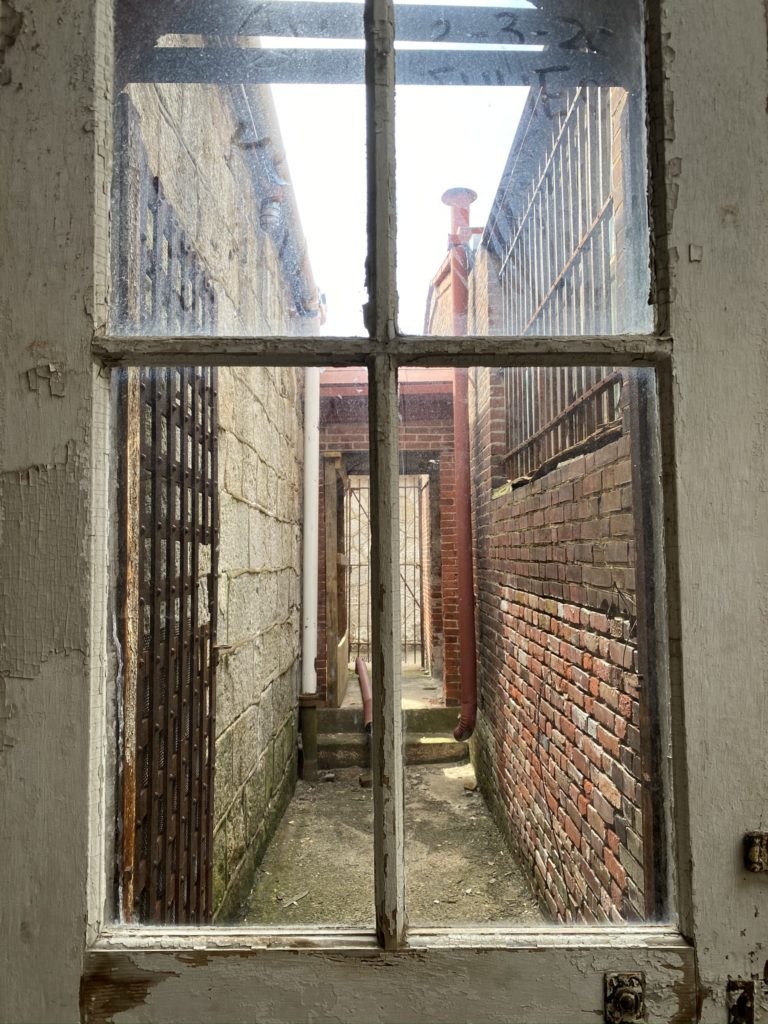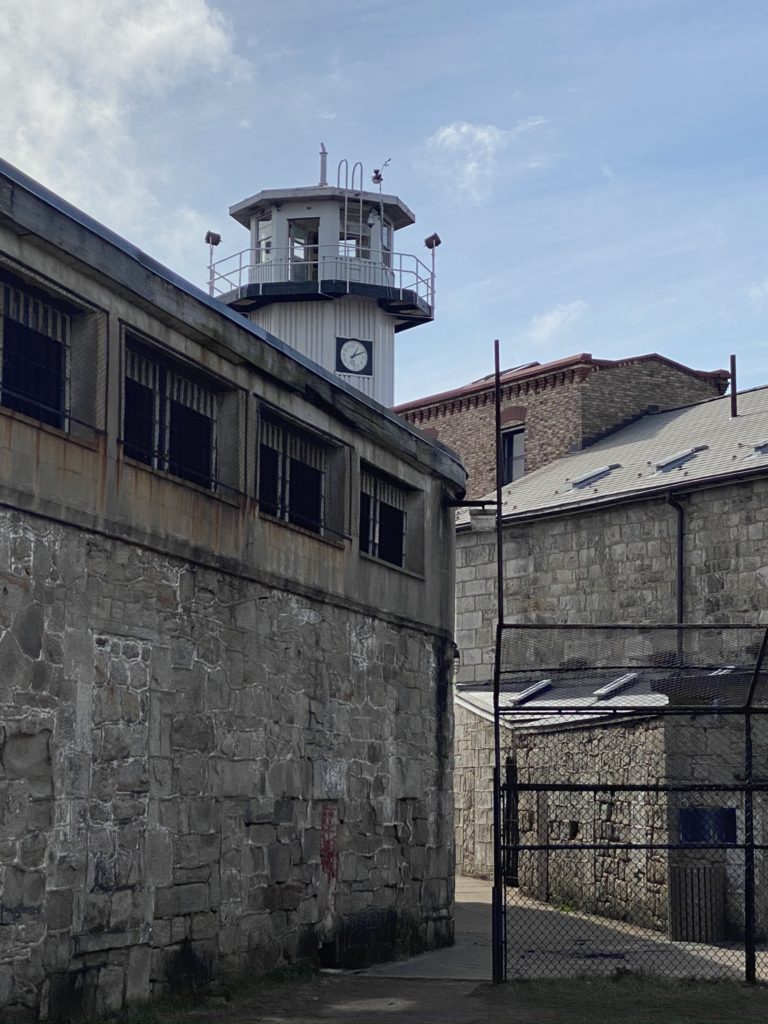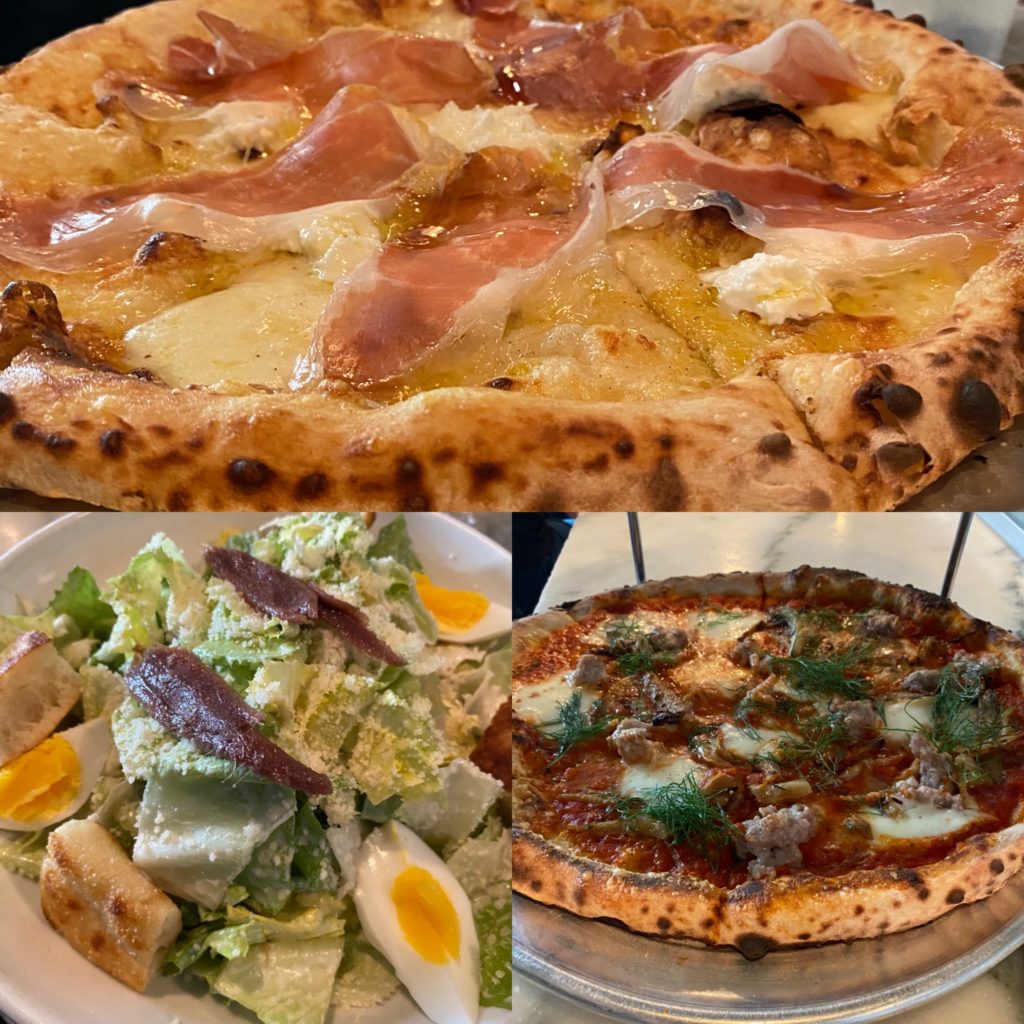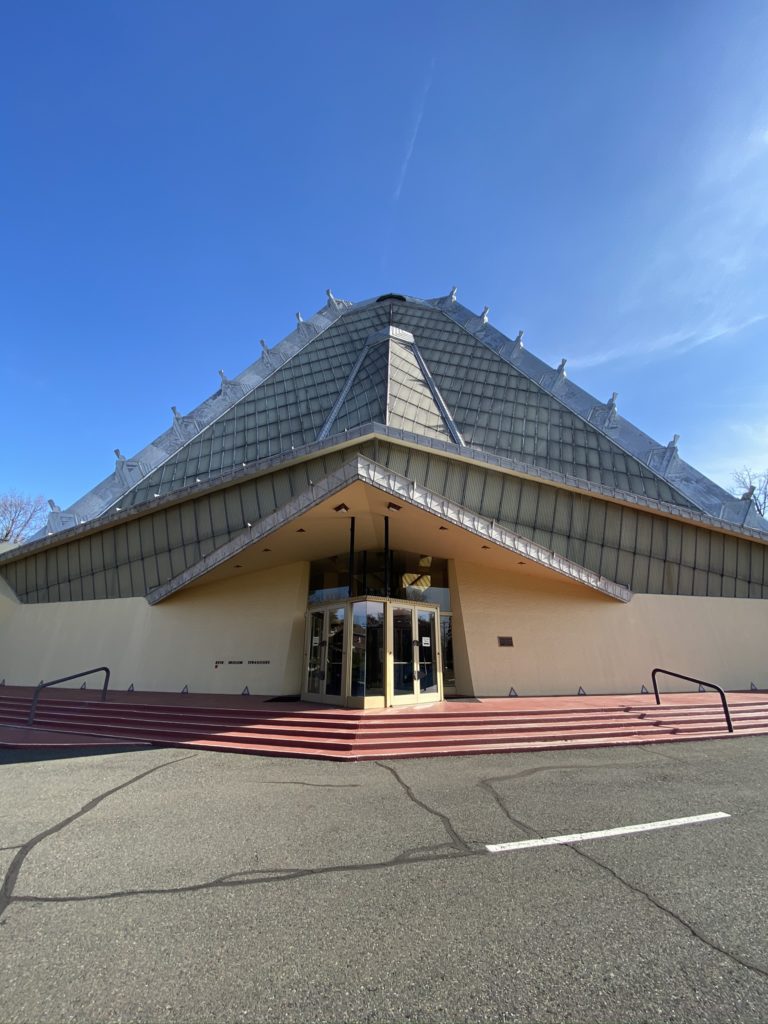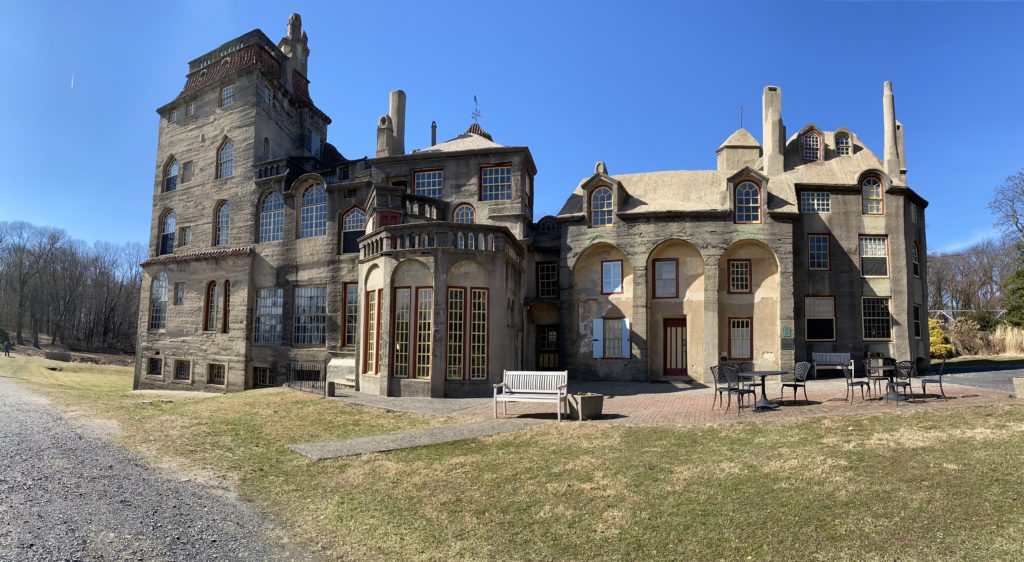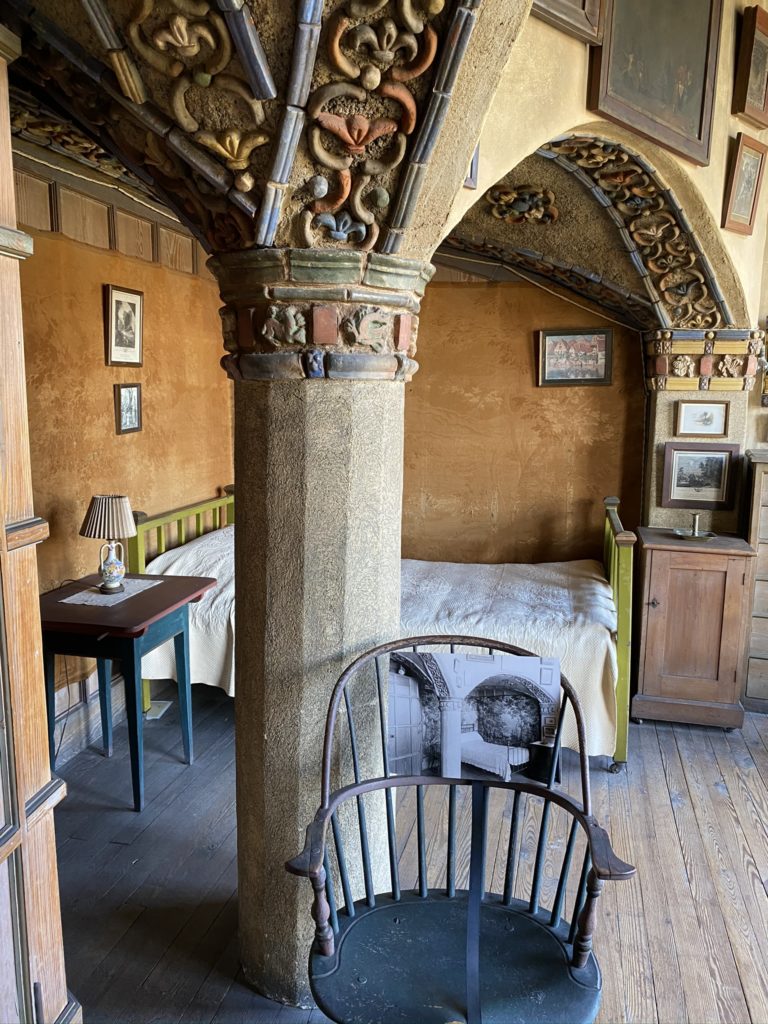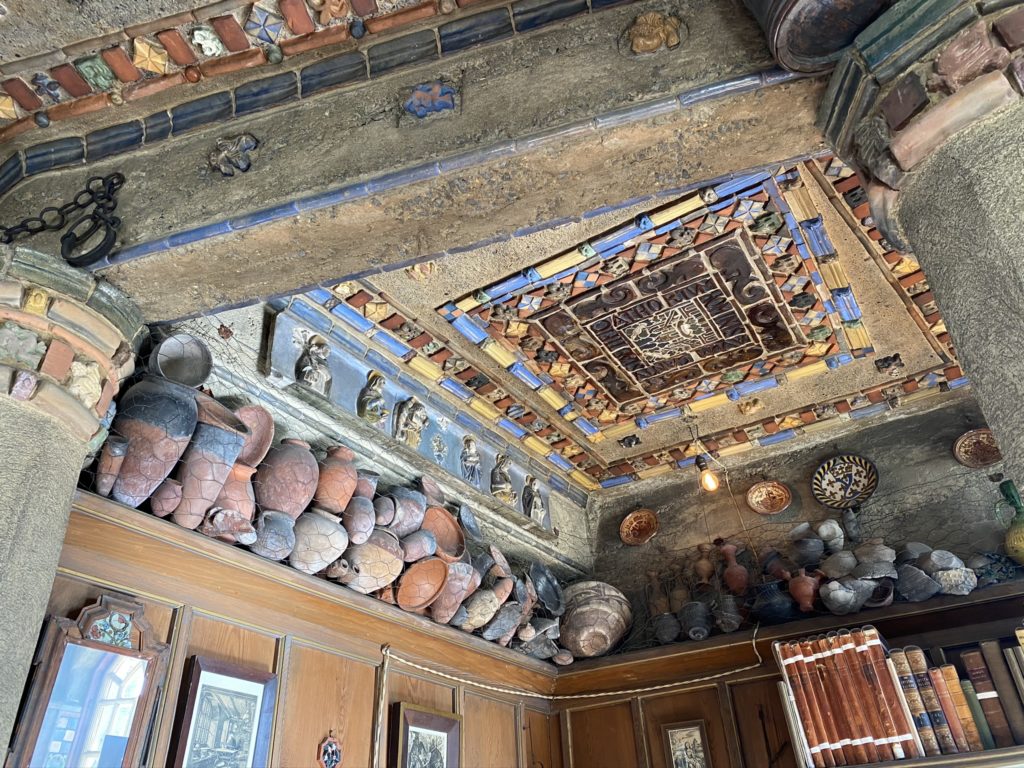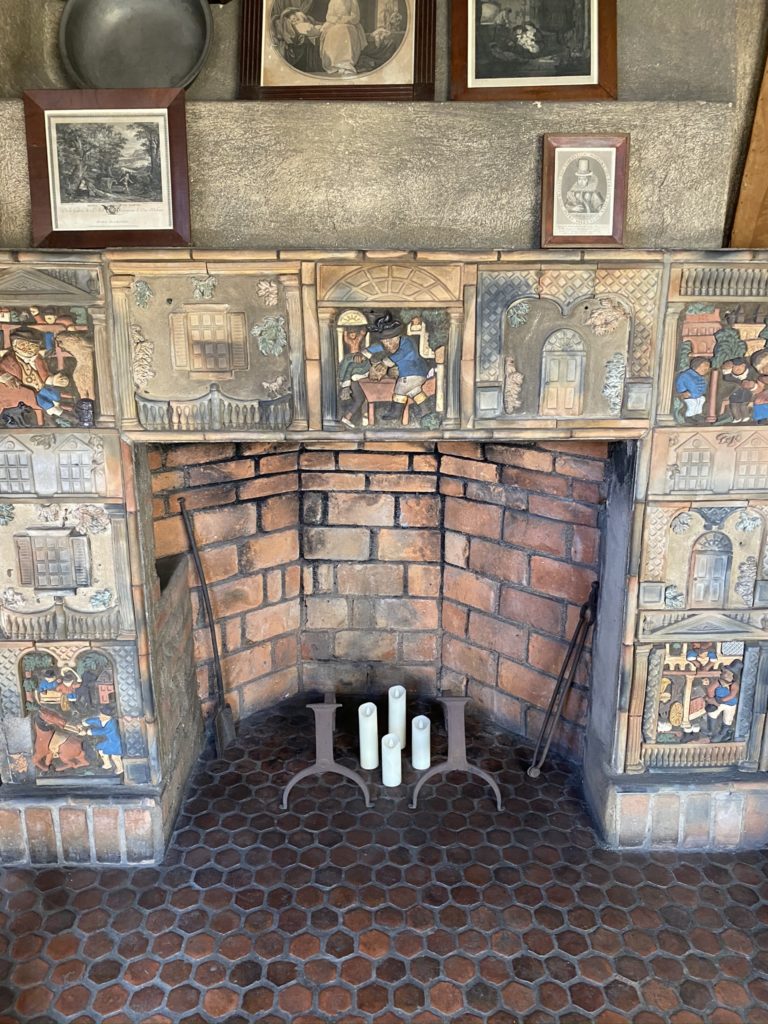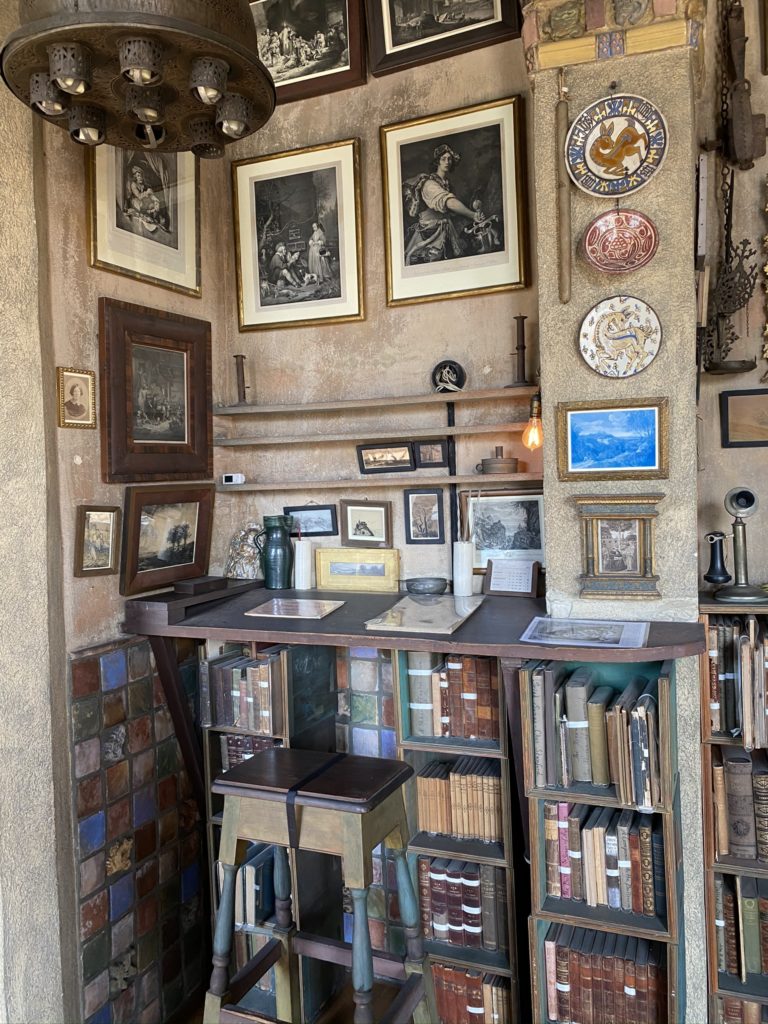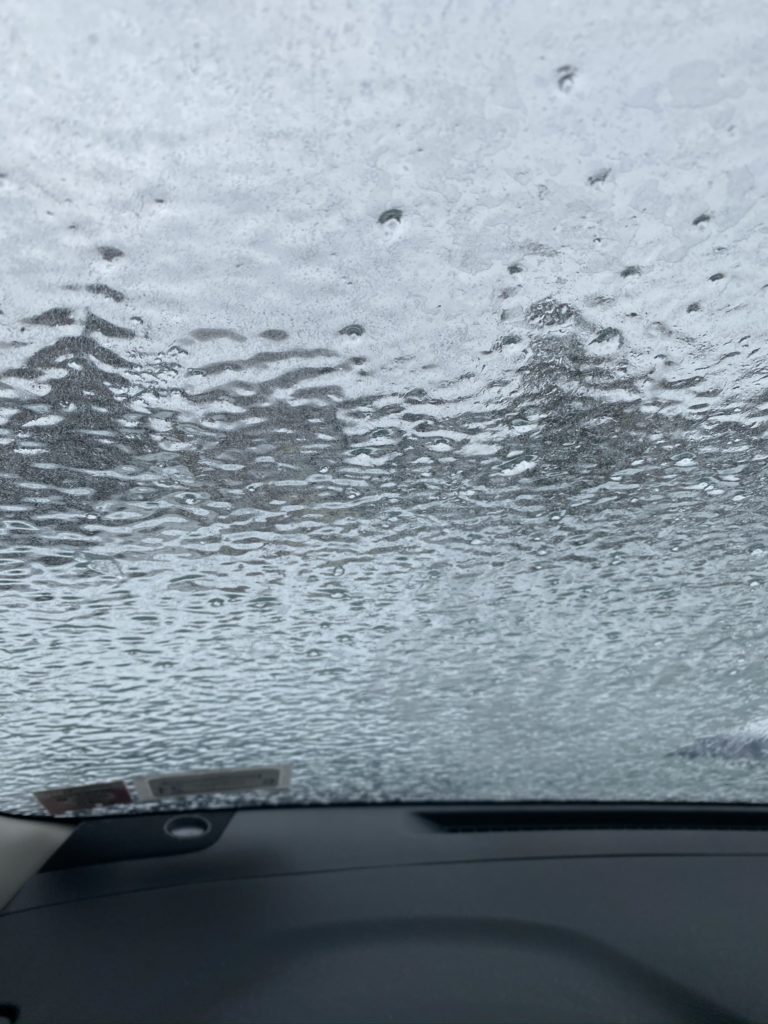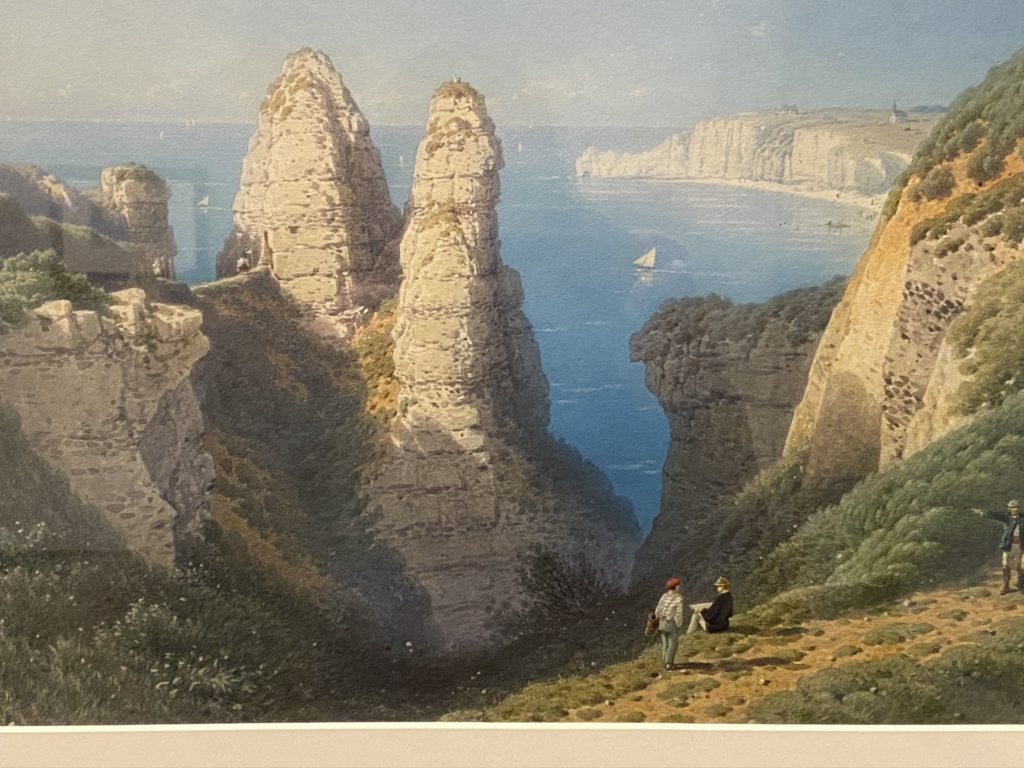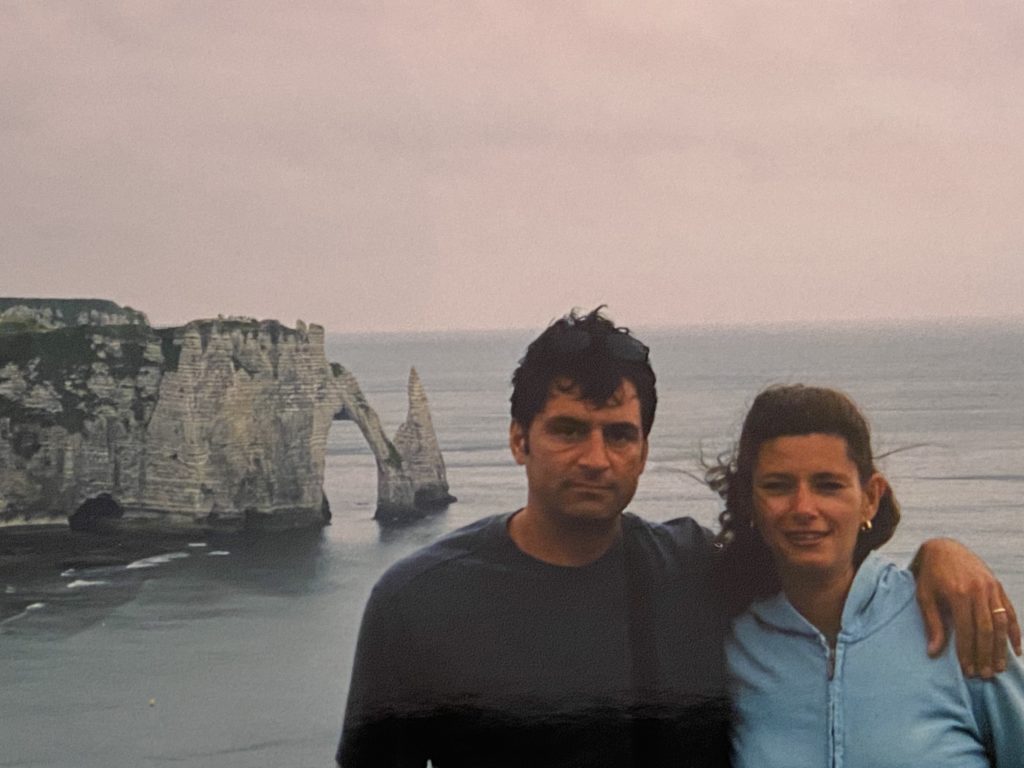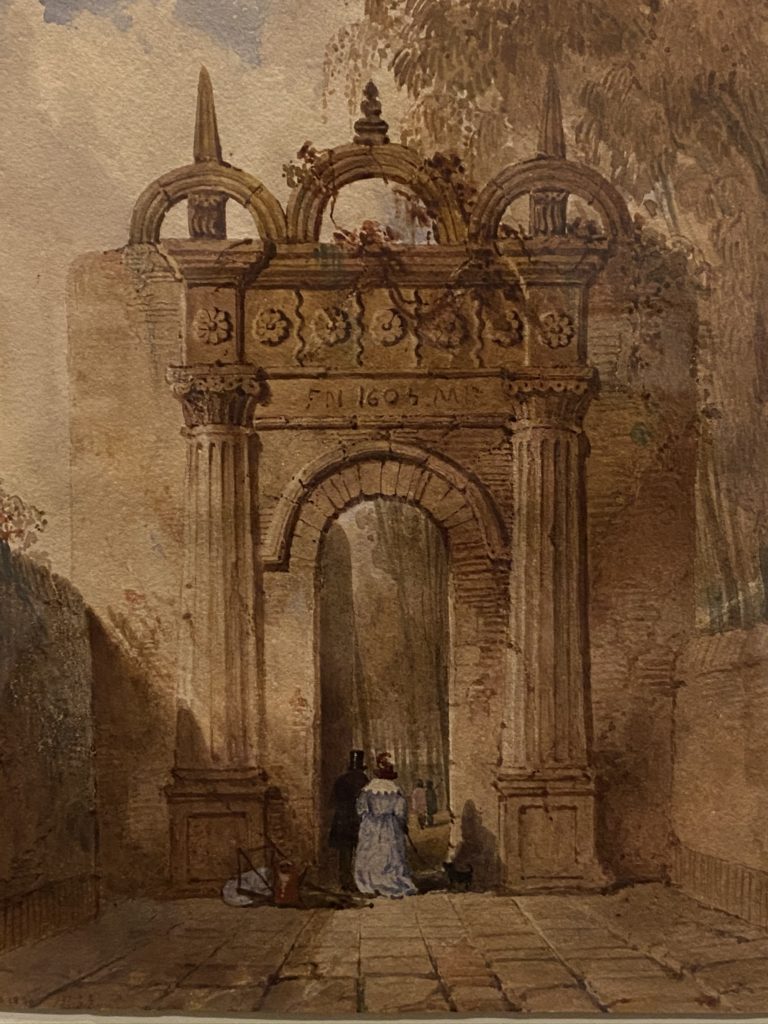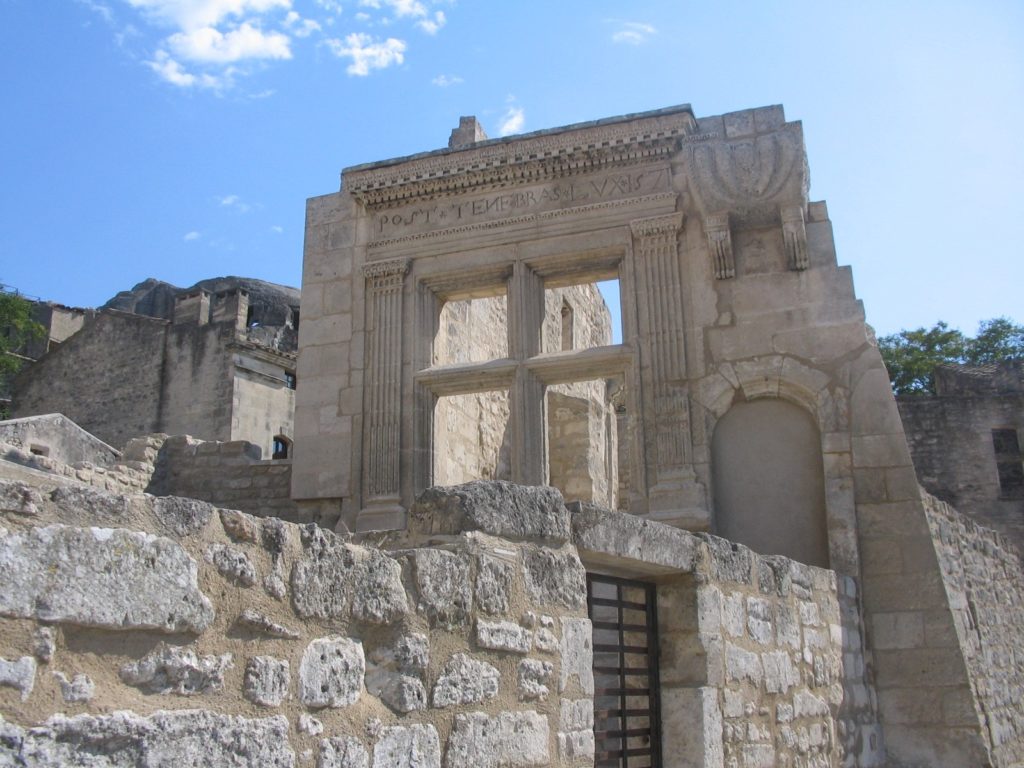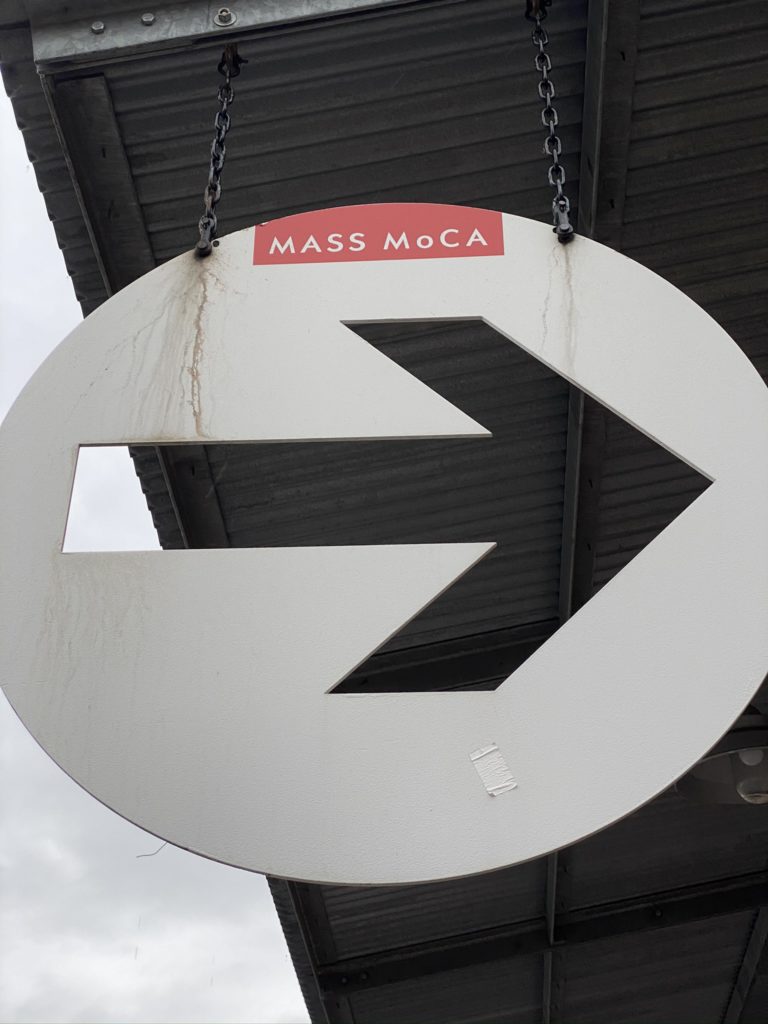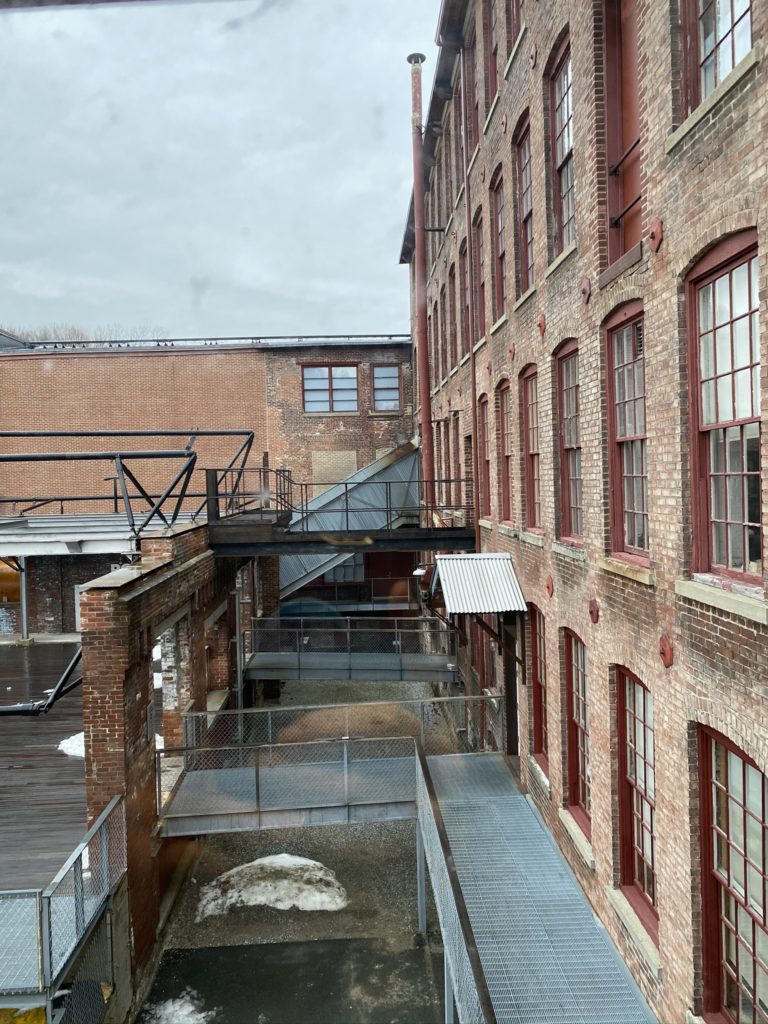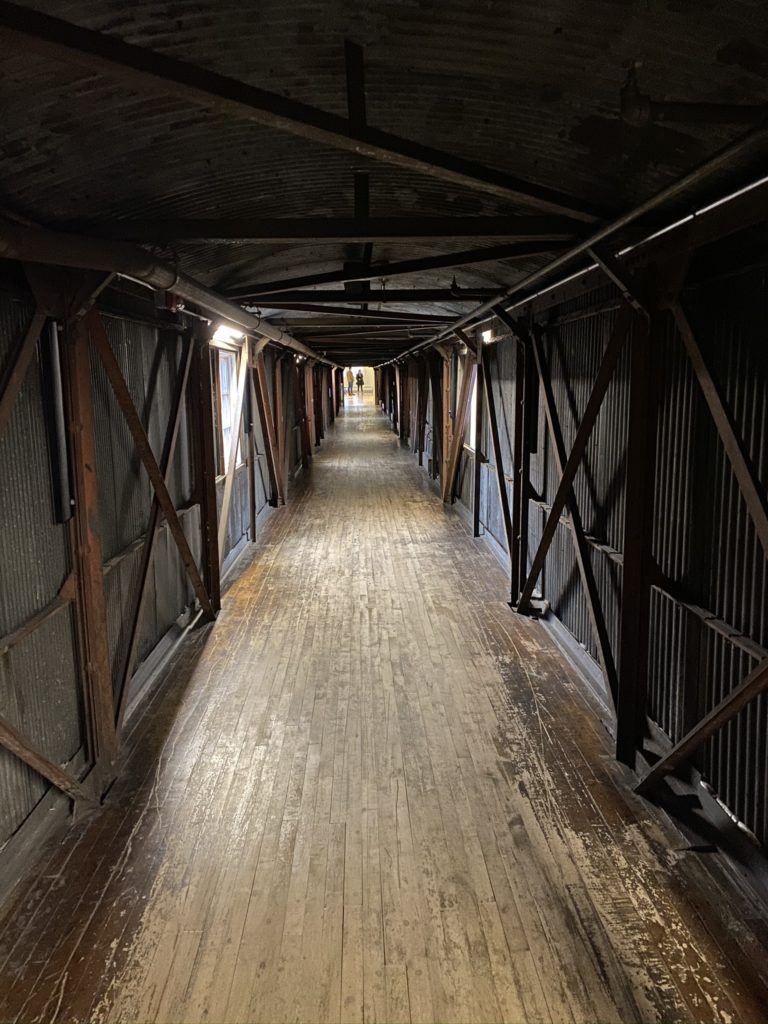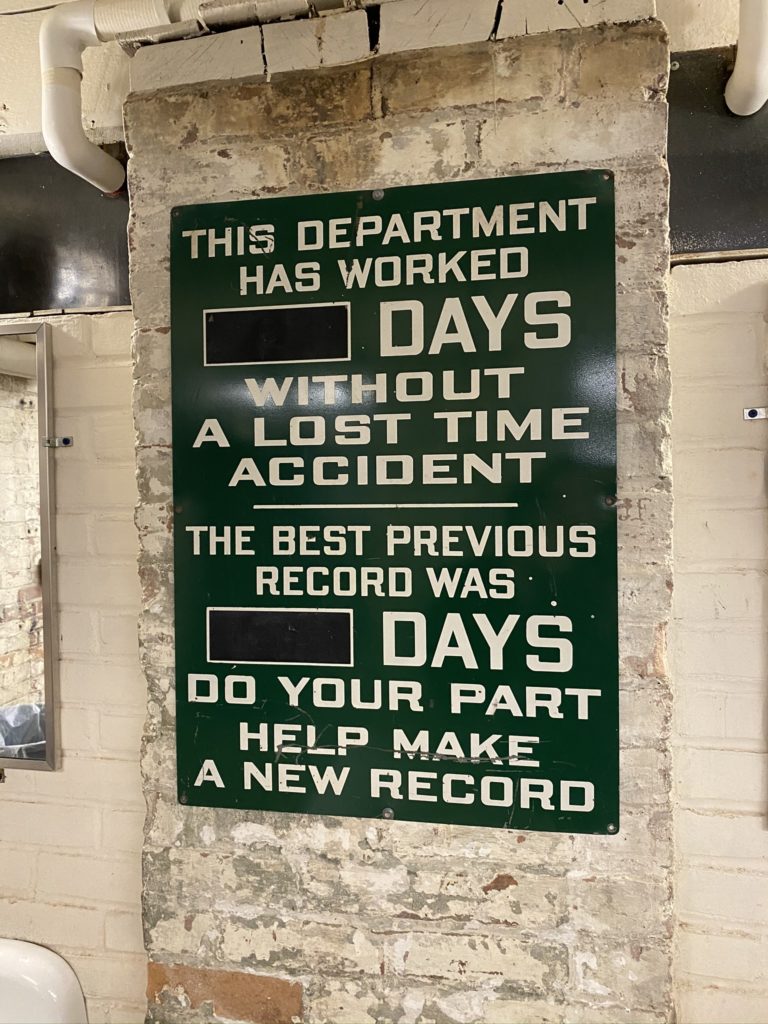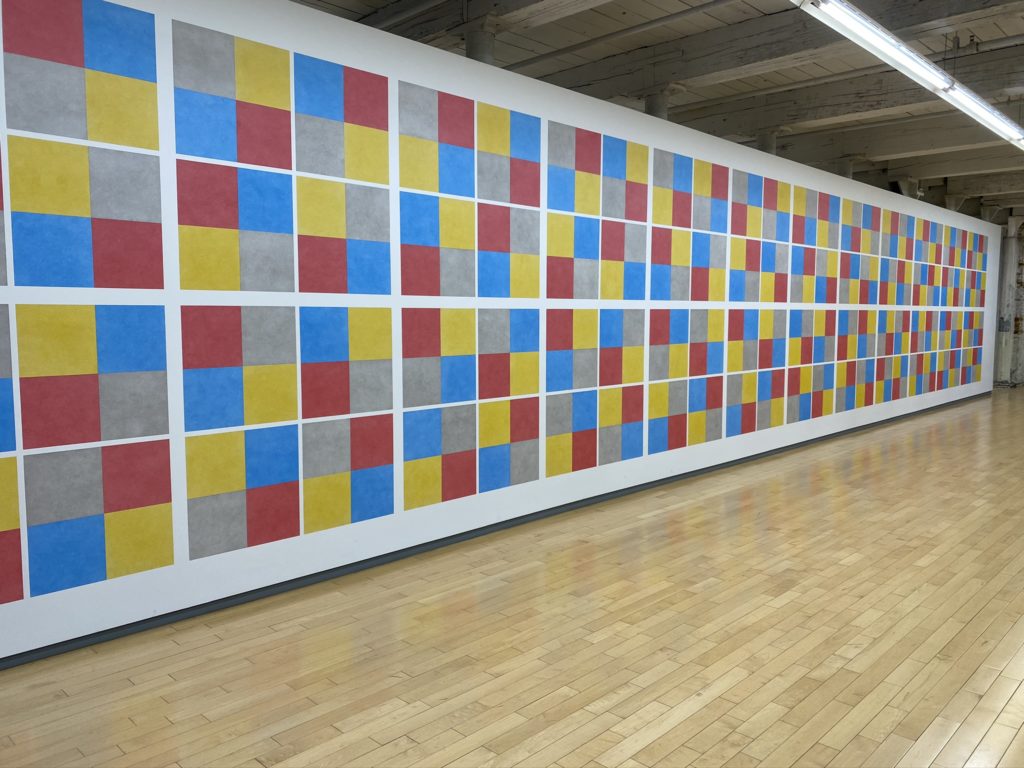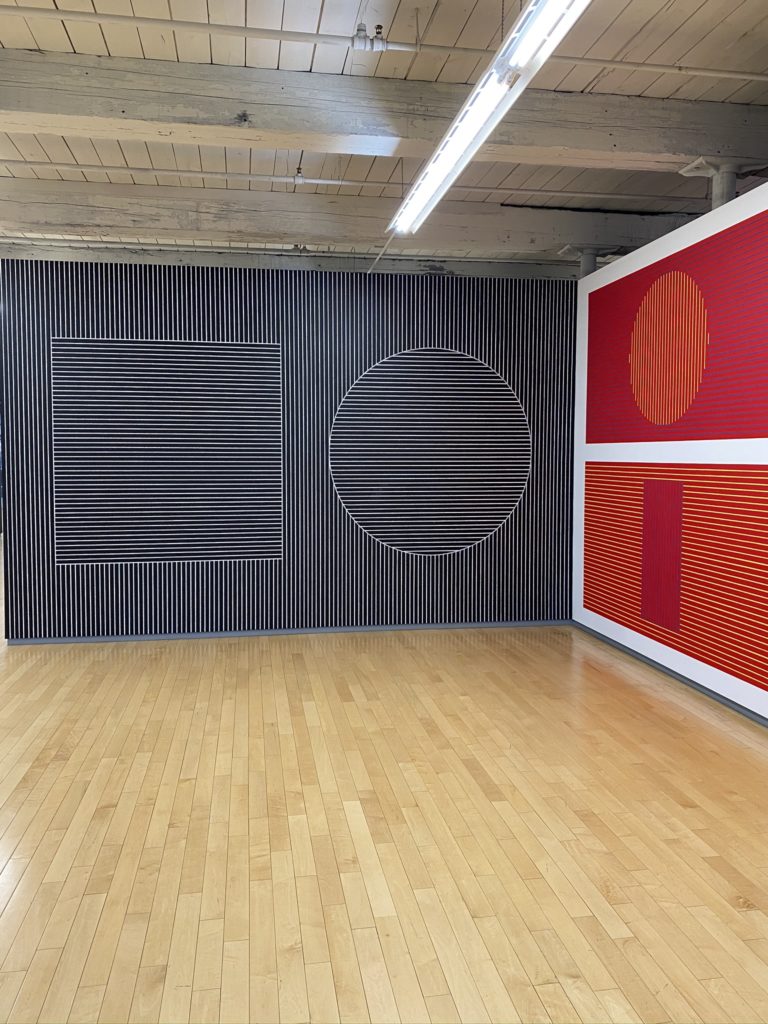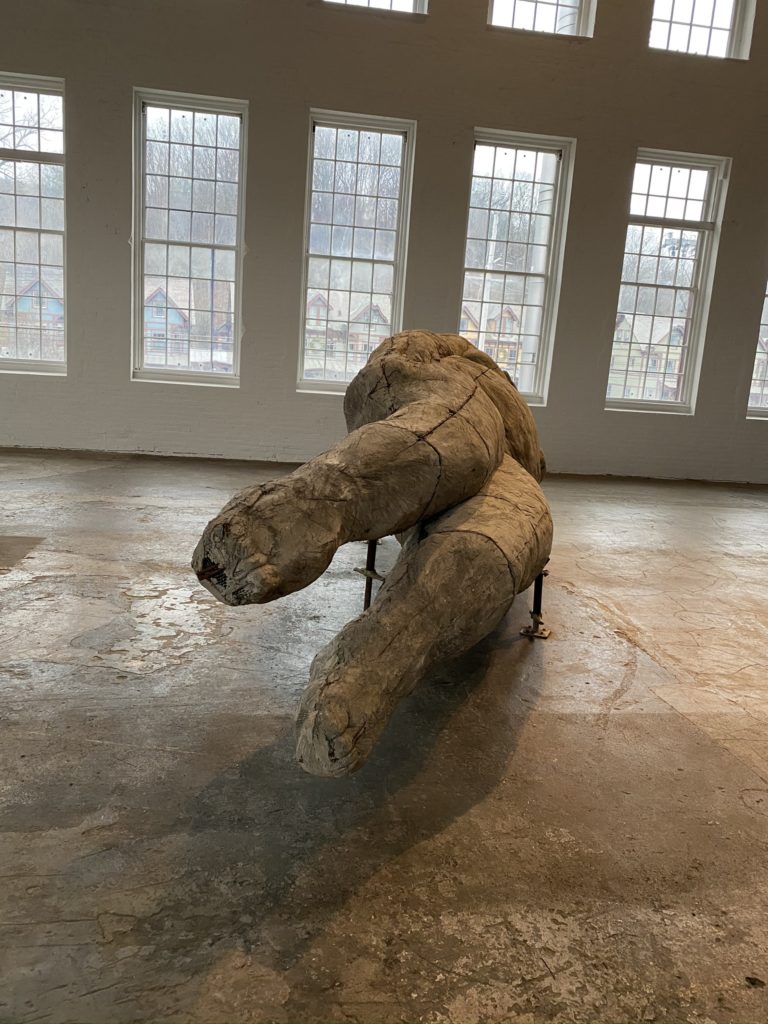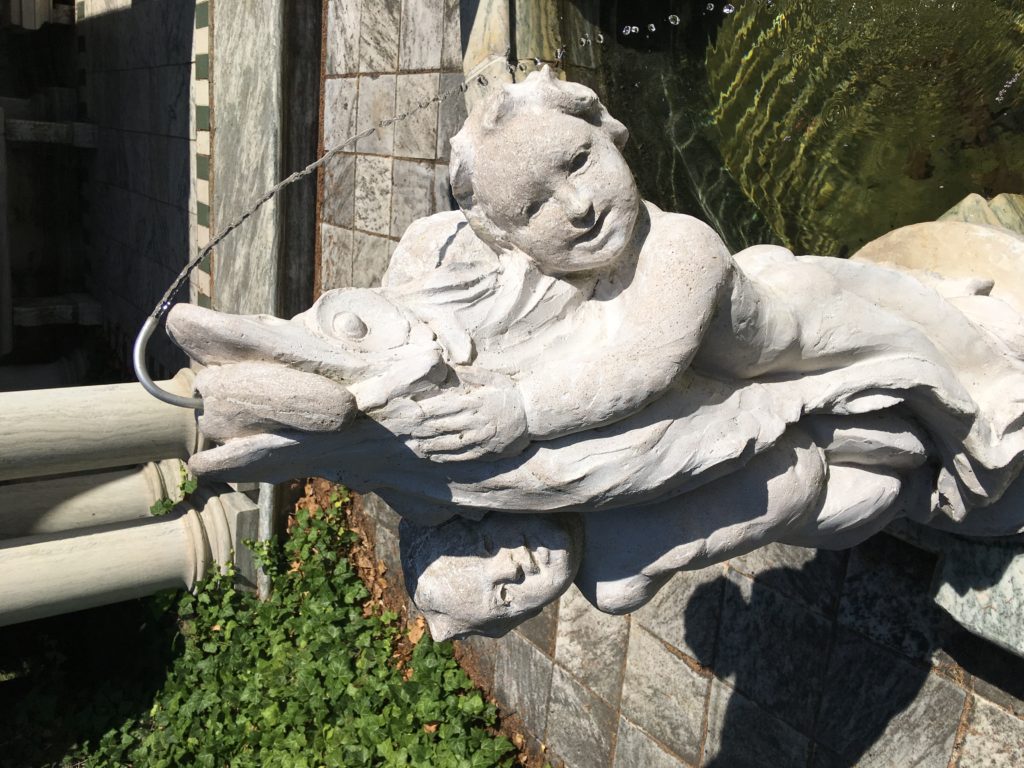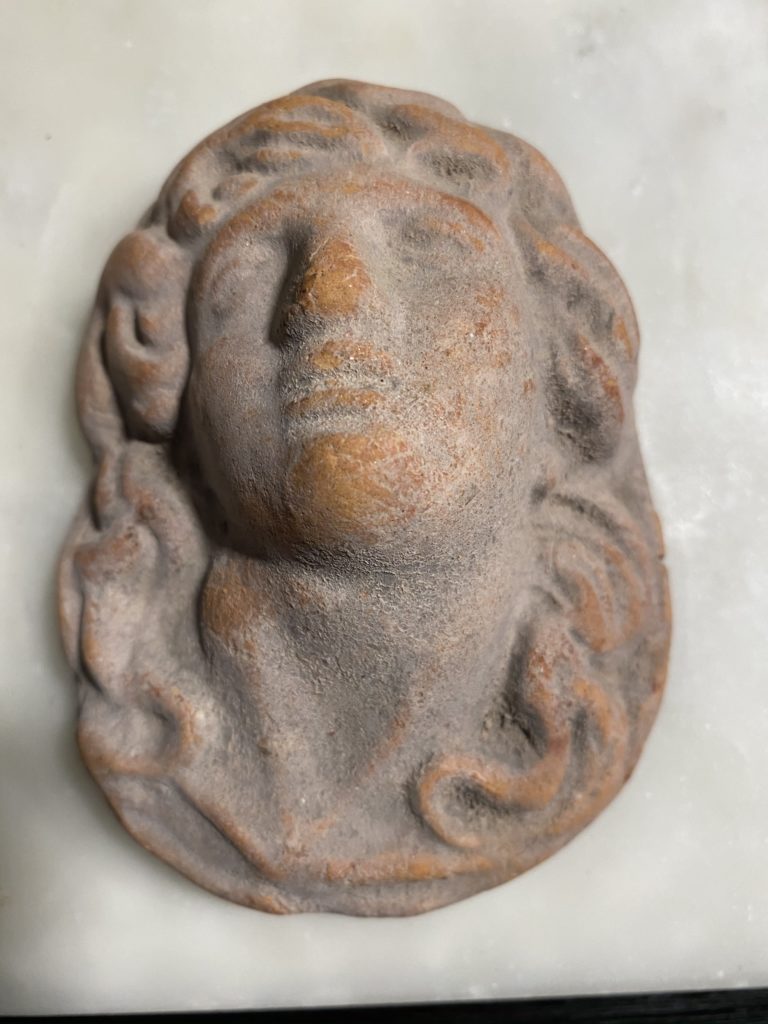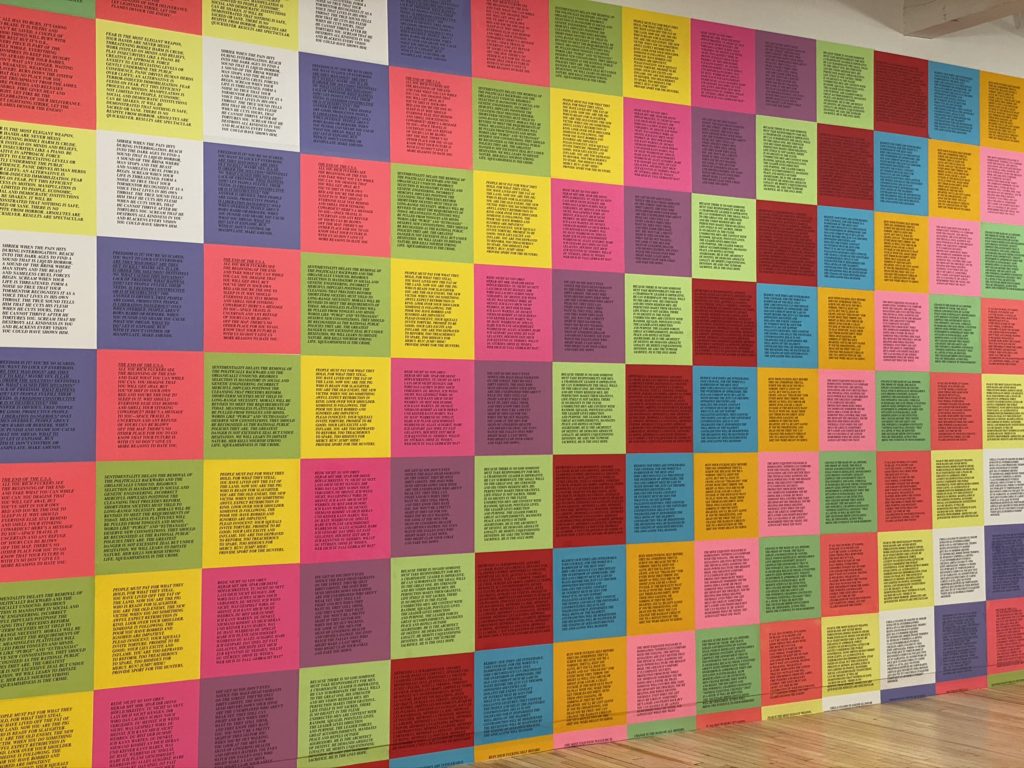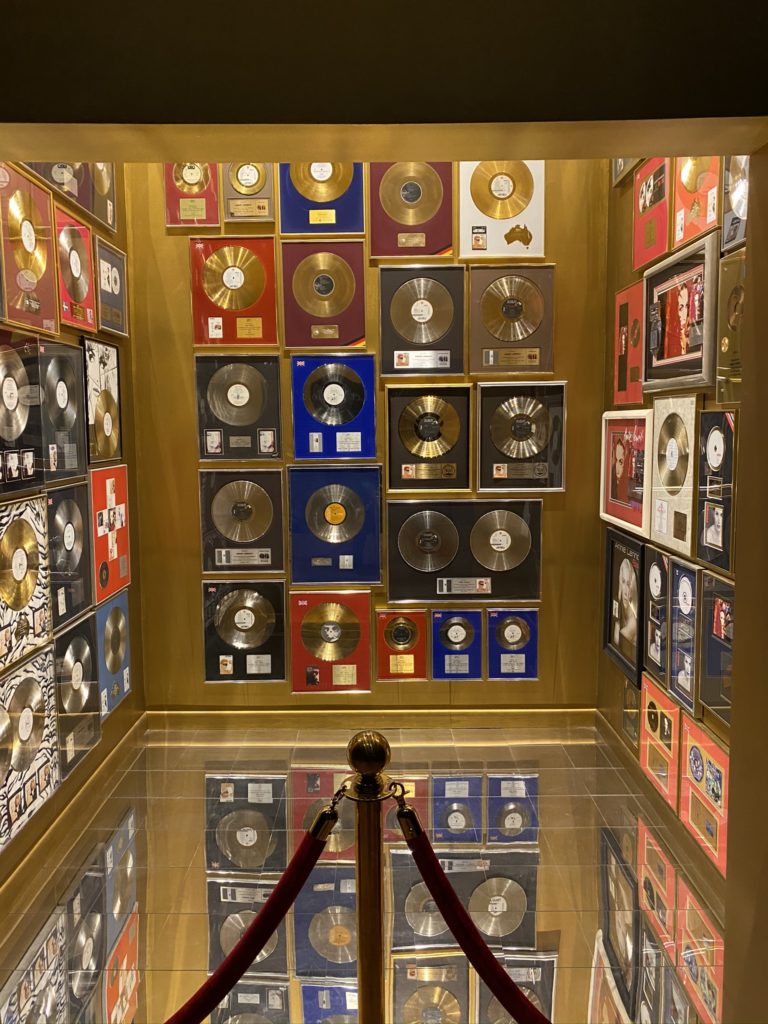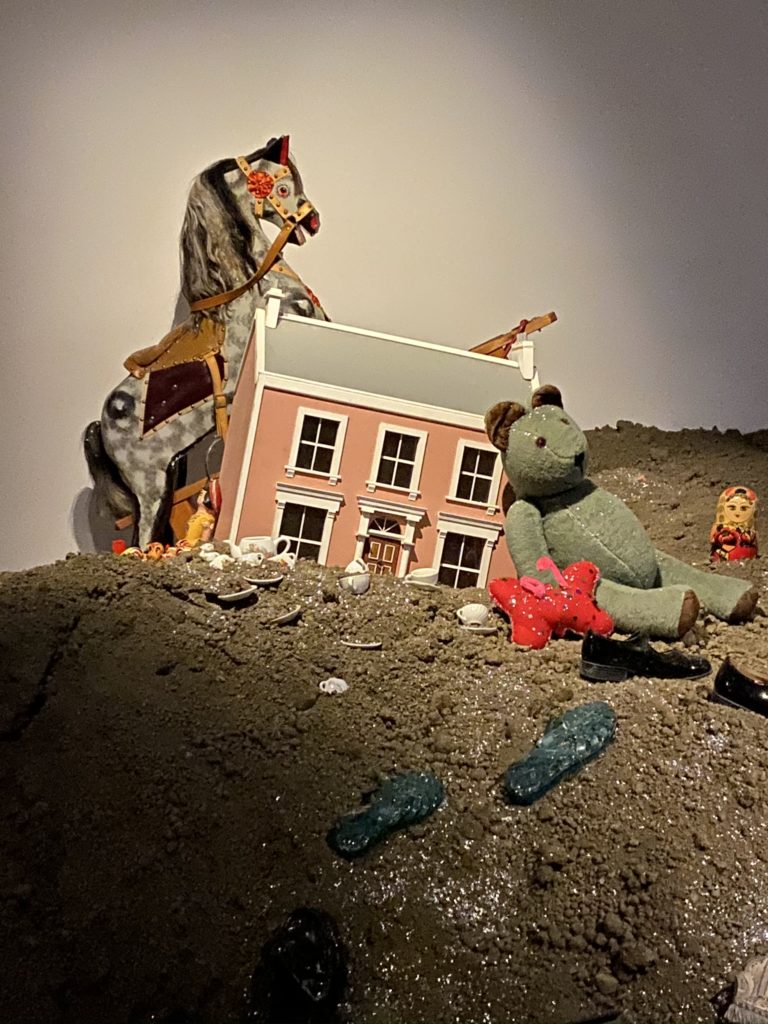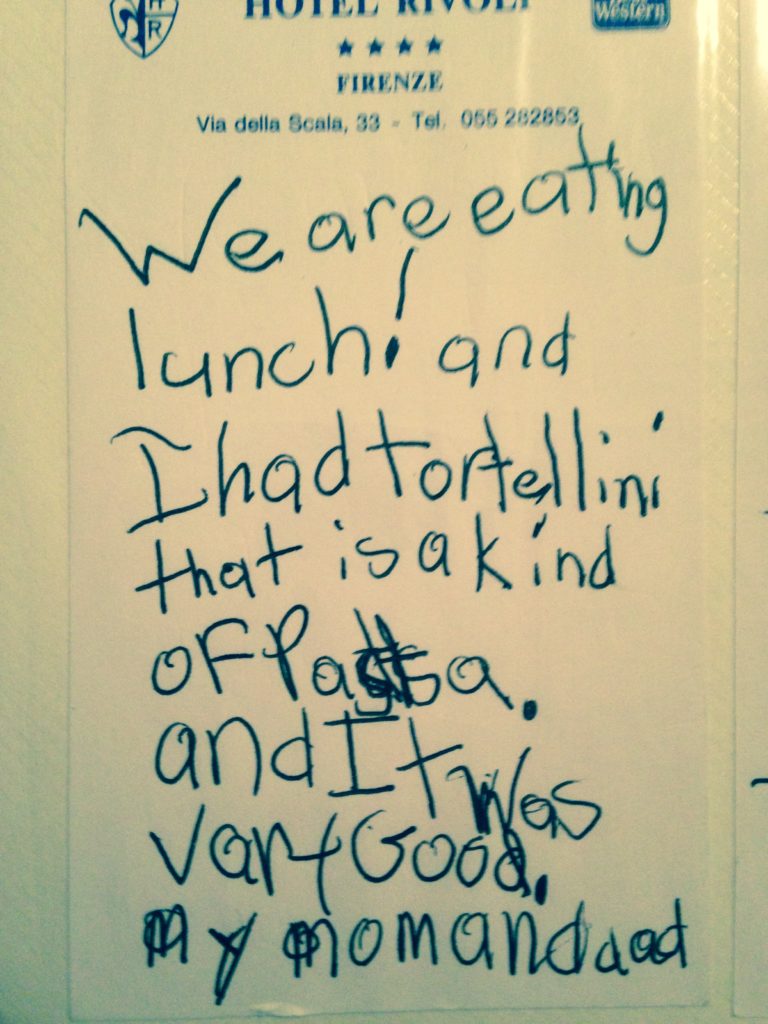Part IV – Road Trip Endings
We left Canada in the morning and headed back into Michigan. We had tickets for a tour to see Frank Lloyd Wright’s Smith house, the Cranbrook House and Gardens, and Eliel Saarinen’s art deco house on the Cranbrook Academy campus the following day.
Problem was that since staying more than one night in Bloomfield Hills, Michigan, (where the Cranbrook Academy is located) would be prohibitively expensive, we decided to stay further away. Which is how we ended up in Grand Rapids, Michigan, a town we had never been to.
Gerald Ford Presidential Museum
We got there later in the afternoon than planned (border crossings, traffic and a lackluster fast food lunch contributed to the delay) but ended up at the Gerald Ford Presidential Museum with just enough time left to tour the museum.
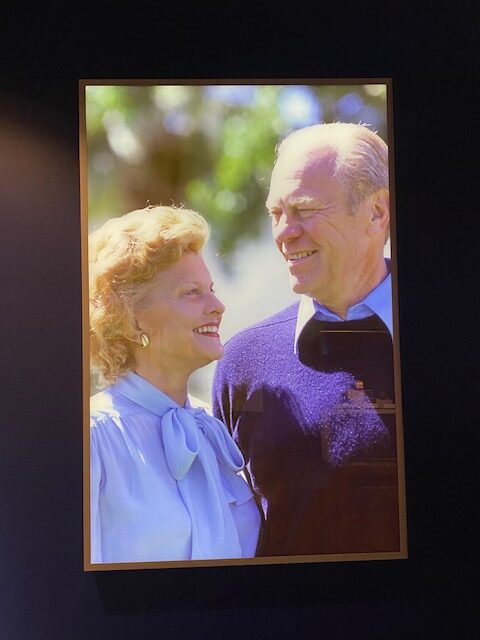

Was it coincidental that we ended up there exactly 50 years to the day (August 9) that he took office? Perhaps. What was particularly interesting for me is that since I was living in Munich at the time (and a teenager), there was a lot of American history and goings-on that I didn’t know about. I mean, yes, I knew about Vietnam, Watergate, and Nixon, but not much more than that. Consequently, I thought the museum was fascinating and they even recreated the oval office. Plus, they also had the famous needle nose pliers, and the screwdriver used to break into Watergate on display.




Both Gerald Ford and his wife Elizabeth (Betty) are buried on the property and there are statues of them, too.

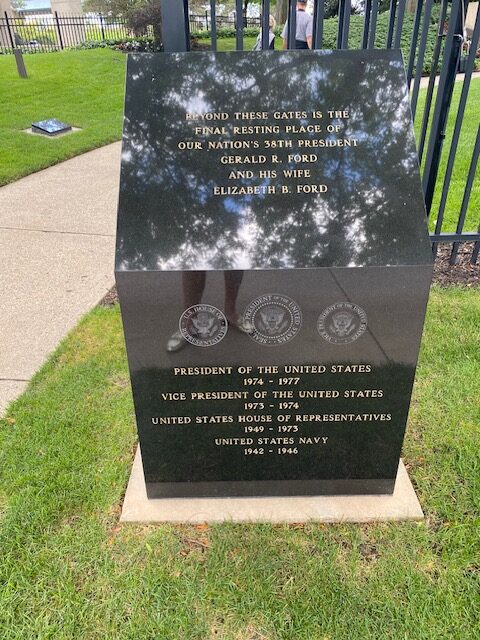
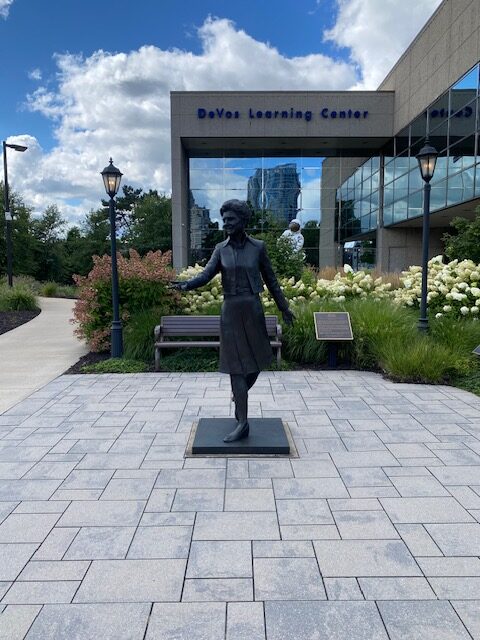
Downtown Grand Rapids
After the museum we drove through downtown Grand Rapids. There were quite a few people walking around and some sort of downtown festival. What we noticed, however, were the stores and the restaurants! Apparently, we had stumbled back into civilization; that was the good part of the afternoon. The bad part was we checked into a Homewood Suites that occupied a certain number of floors of an old building. We have stayed at properties like this before and I find it disconcerting not knowing where to check in or park your car.
After finding the “front desk,” we were upgraded to a bigger suite with a window and a view of the downtown. We started to unpack and as I went to pee, I found out that the toilet wouldn’t flush. So, we called downstairs and one of the managers came up with a key to a different room on the same floor. This room had one window that looked at the interior of the parking garage and nothing else. The room was dark and depressing. I decided to ignore the situation and figured I would just politely complain in the morning.
Dinner at Leo’s
There has been a trend lately of restaurants texting me nearly 30 minutes before a reservation to tell me my table is “ready.” If I made a dinner reservation at 7:30, why would I possibly want to show up 30 minutes earlier? This has a profound negative effect on my mood before I’m even there. Primarily because it signals to me that 1) the restaurant is not crowded (bad sign, especially if it’s a Friday or Saturday night), and 2) the kitchen wants to close so everyone can go home.
We arrived at Leo’s at exactly 7:31. The place was not crowded and the interior of the restaurant left something to be desired. (Think hotel dining room anywhere in the world). I had picked Leo’s because it was known for its seafood. Even though we had spent the last four days eating fish, when you are as land-locked as we are now living up in the Mohawk Valley of Upstate NY, you eat as much fish as you can when traveling.
It technically wasn’t warm enough to have soup (I’m finicky that way about seasons and soup eating), but for some reason the salmon chowder that was on the menu appealed to me. A combination of both smoked and fresh salmon with chunks of potatoes and some corn, this chowder was really good. It doesn’t look like much here, but it was tasty.

Mussels were next. The tomato broth was really fresh and tomatoey, but I was so captivated by the beautiful plate it was on that when I was done, I actually turned it over to see if I could find out where it was made. (No clue.) And finally, another round of perch. We had two more days left in Michigan and I knew that tonight would be the last fish we’d eat on the trip. Sigh. The perch was just okay. And we passed on dessert.

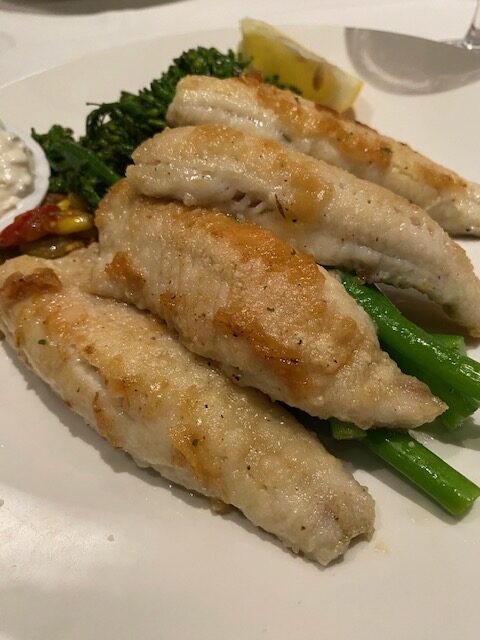
Calder Plaza
Afterwards we walked around downtown Grand Rapids a bit – primarily to see if we could see the Alexander Calder sculpture, “La Grand Vitesse,” which we did. I also liked the way the town had renovated some of the old buildings but kept a few interesting architectural elements. (Think gas lighting.) It was a fun walk after our meal.


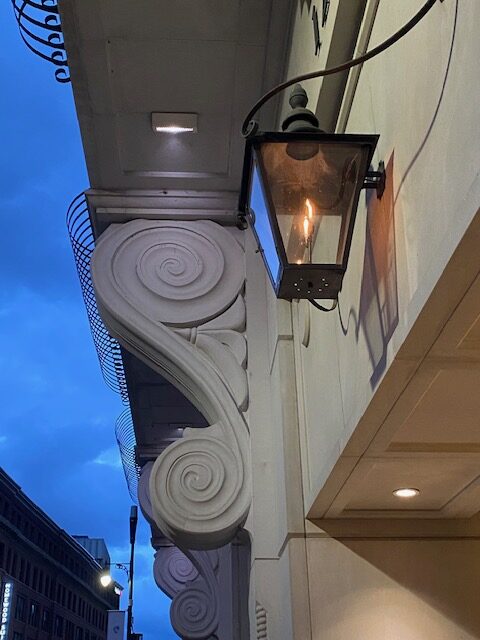

Back on the Road
Before we left the hotel in the morning, I did mention how unhappy I was about the room and the parking and the toilet situation. We must have gotten lucky because the general manager was actually working the desk and comped us not only the room, but the parking as well. Thank you for that!
Our architectural tour started at 1 p.m. and would last roughly four hours. I really dislike any event that interrupts a meal but figured we could grab something for a quick, early lunch somewhere.
We drove about two hours southeast and reached Bloomfield Hills. If anyone has ever visited Bloomfield Hills, do you know what’s missing? SIDEWALKS! We headed towards the commercial strip first and got a turkey wrap to go. And since I was adamant that I couldn’t leave Michigan without having a slice of cherry pie, we just happened to find a pie store. Did you know pie stores even existed? I didn’t. Fortunately, they did have slices of cherry pie. Was it the best pie I’ve ever had. No, but that’s not the point.

Cranbrook Art Museum
We met in the courtyard of the academy to check in at the Cranbrook Art Museum and to get our bearings. Founded by George Booth in 1927, he was instrumental in starting the arts and crafts movement in the U.S. and teamed up with Eliel Saarinen (father of more famous architect Eero Saarinen) to develop plans for the campus. The museum was completed in 1942, and unfortunately, we didn’t have time to walk through the exhibition. But I loved the gardens and all the fountains.




A Three House Tour: Cranbrook First
We started by seeing the Cranbrook house first. While it was grandiose (think Tudor) on the outside and had some interesting features, I’ve come to dislike this kind of architecture and furnishings. Everything seems old and musty. I did like their library, and they had an interesting German wood carving that reminded me of Munich. Also, some painted ceilings that gave the place a European je ne sais quoi. When I looked through my photographs, it seemed that I took more pictures of the exterior of the house (grounds, etc.) than inside.








The Saarinen House
Eliel Saarinen designed a house on campus where he and his wife Loja, lived for over 20 years (1930-1950). The Cranbrook Art Museum’s website describes it as a “beloved architectural treasure,” and I couldn’t agree more. This house appealed to all my senses – the clean lines, the modern furniture, even the paint colors they chose for the walls, as well as the floor coverings.






And don’t even get me started on the furniture. Look at this photograph of a bedroom with the original womb chair and ottoman designed by Eero Saarinen. Notice anything that kind of looks Ikea-like? Yep, he was the guy who did it first. And a closet with pull out shelves? (I had a version of this when I was in Munich; it’s very practical.)
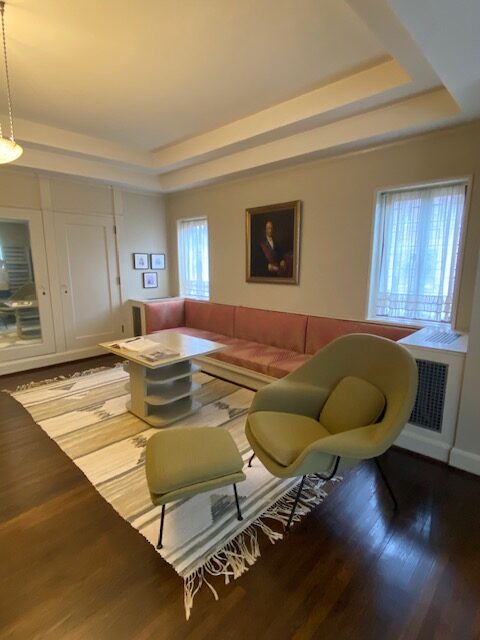

I couldn’t resist sharing this photograph of our tour group, all wearing booties, and extremely enthusiastic about the houses and the architecture.

Finally, Frank
I wanted to like this Frank Lloyd Wright house, but I found it underwhelming and cluttered. What I did love about it was the back story. Melvyn and Sara Smith met Frank Lloyd Wright in 1941 and commissioned him to design a house. Frank, in his customarily dismissive attitude when potential clients would approach him, told them to find property first and come back when they found it. Apparently, even though Melvyn and Sara had absolutely no money and were earning paltry salaries as teachers, if you split a hot dog for dinner with your spouse and save every last penny that you earn, you too, can buy land. This property eventually became a Frank Lloyd Wright Usonian house that the Smith’s then had to build themselves. (And I thought renovating the Red House was difficult…)




In true FLW fashion, this kitchen is compact and designed for people who don’t cook. And look at the twin beds and the ugly green bathroom!
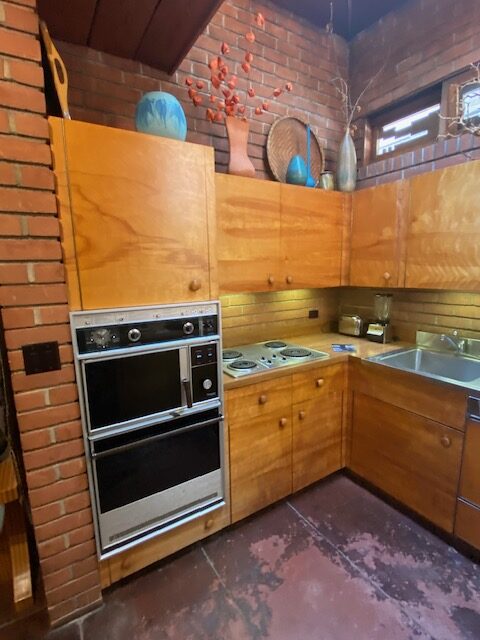
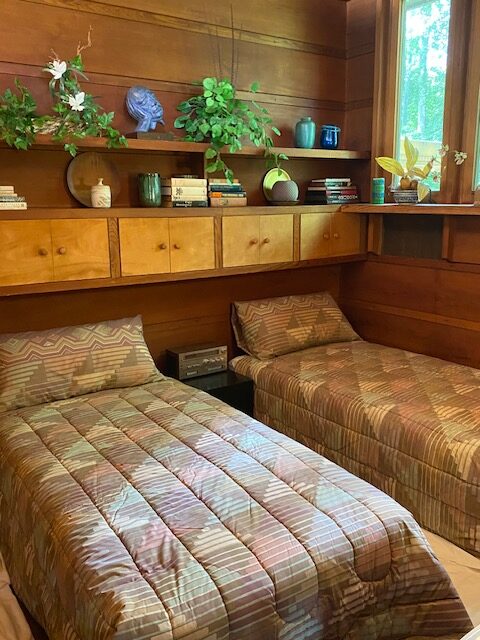
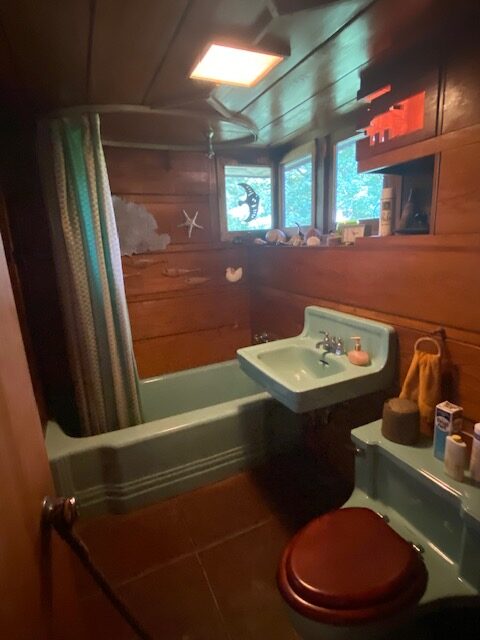
There was also an extension that was added on at some point. I did like the dining room and thought the chairs were fun.





After the Smith’s built the house, they also became avid collectors of things. (Think borderline hoarders.) That’s why the house felt cluttered to me because there was a lot more stuff in this FLW house than others we’ve seen. I guess the moral of the story is to be careful what you wish for. You might end up with it.
The Town With No Sidewalks
We spent the night at a Hilton in the town with no sidewalks. When I inquired from the front desk clerk about this strange phenomenon, it was explained that the residents wanted to make sure that people who weren’t supposed to be there weren’t walking around making themselves “feel at home.” I assumed he meant people of color and since he himself was black, I took this to heart.
However, since we were having dinner across the street, we wondered, how would we actually get across the street? With all the traffic? And no crosswalks or lights? Answer: very carefully. We had our last dinner of the trip at an old school steak restaurant where I was so relaxed that I didn’t take a single picture of our meal! And that’s okay. We were heading home tomorrow, an 8 hour plus drive back to New York.
In case anyone is curious, my most recent short story on Substack was inspired by the visit to Cranbrook and the town with no sidewalks. Here’s the link if you haven’t read the first part of the two-part story.
The Town With No Sidewalks – by Julie McCoy (substack.com)
Until our next “Let’s Go” adventure.
